The 6 Best Soundbars in 2025 – Instantly Turn Your Living Room Into a Movie Theater at Any Budget
Enjoy booming scenes and rich surround sound with these sleek soundbars, ranging from $150 to $1,000

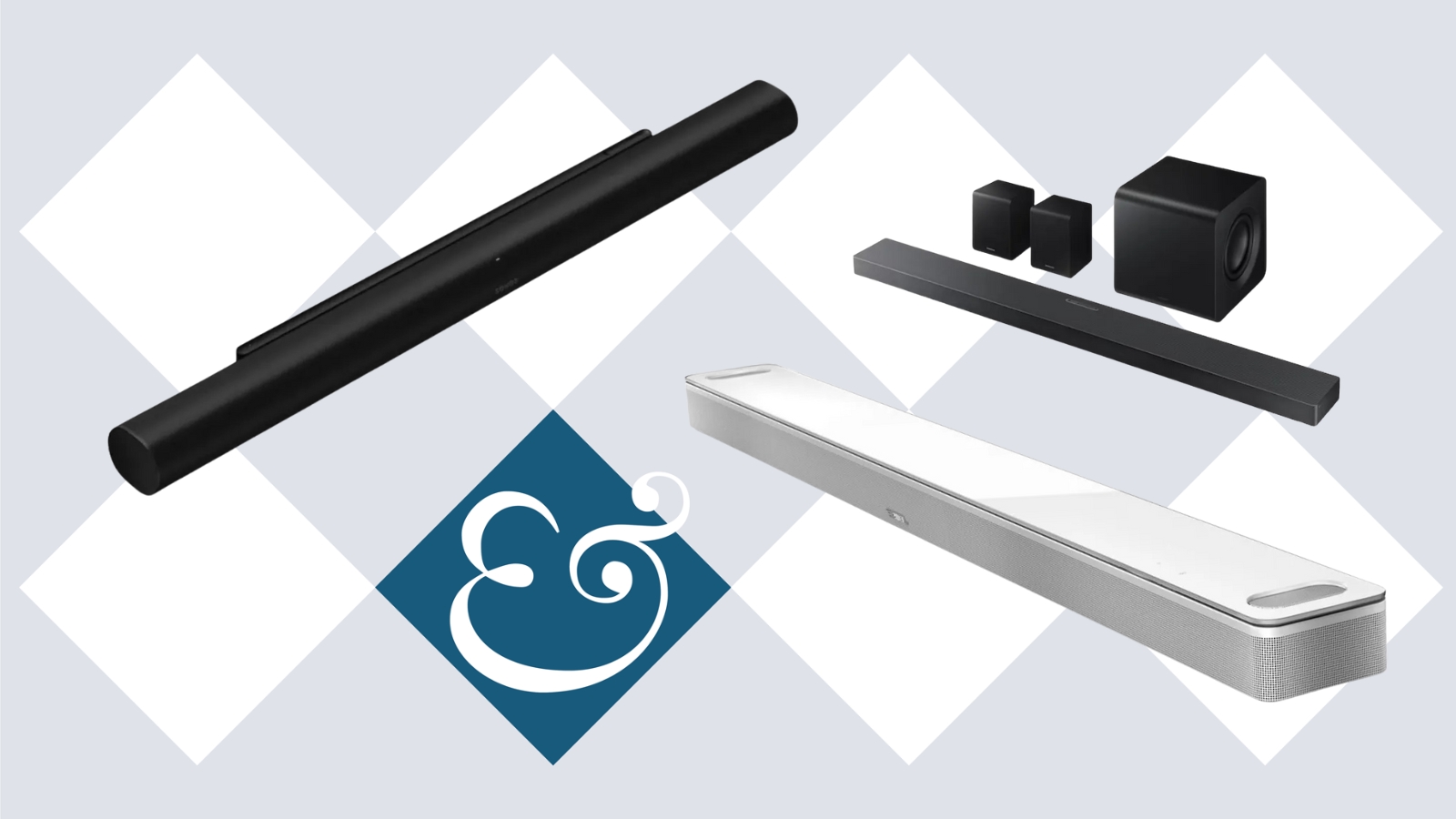
It's a beautiful thing living in an era where entertainment and home technology are both of such high quality. For a long time, we relied on the theater for the full movie experience, but we can now instantly recreate it in our living rooms, powered by nothing more than a TV and a soundbar.
The best soundbars can transform your space, amplifying your favorite TV shows and movies with rumbling bass and surround sound. It's one of the simplest yet most impactful smart home must-haves, with a soundbar's sleek design also adding a visual statement to a room.
As Homes & Gardens' home tech editor and lifelong audiophile, I have thoroughly tested the latest soundbars in my home for real-world results, including flagship Sonos and Bose models, as well as budget-friendly options for smaller spaces. These are the six best soundbars to elevate your home movie night and music experiences.
The One-Minute Verdict
After testing seven soundbars in my home for 30 hours, over a playlist that includes seven movies and TV shows, and 17 songs spanning 24 genres, these are my top picks. I consider the clarity, depth and quality of the sound, the setup time, and how effectively I can fine-tune the audio with the customization features (read more about how we test).
In every way, the Sonos Arc Ultra is the best soundbar you can buy, offering awe-inspiring sound quality across every TV show, movie, and song I listened to. Its bass is powerful and deep without ever distorting, its trebles are lush, and the sound fills the room in a realistic, immersive way that makes every viewing and listening experience absolutely perfect. It's essentially a plug-and-play soundbar, and can be set up painlessly in five minutes.
But the Bose Smart Ultra Soundbar comes in at a close second, and costs $100 less. Gorgeous highs, powerful lows, and hyper-realistic surround sound make it one of the very best soundbars you can buy. Plus, it's the most stylish option in our opinion.
If the price of these flagships puts you off, I'd recommend the Samsung HW-QS750F for $749.99 at Best Buy. It's the full setup with a separate subwoofer and two surround speakers, but if you have the space (and the patience for a longer setup requiring a bit of cable work), it creates an enveloping, hypnotic soundscape that isn't too far off the Sonos, with each detail coming through clearly, and special attention paid to the bass and trebles.
To spend a little less, the Yamaha True X Bar 40A is the best mid-range option, costing around $399.95, and the Fire TV Soundbar Plus is the only budget soundbar we recommend that will significantly upgrade your home entertainment setup. Both soundbars punch high above their weight with deeper, more impactful sound than your TV.
The Sony BRAVIA Theater Bar 8 has the most realistic surround sound out of the single soundbars we've tested, costs $100 less than the Sonos Arc Ultra, and is very quick to easily set up. Its bass can be a little weak at times, but every sound is delivered with extreme clarity and precision, and everything sounds masterfully well-balanced.
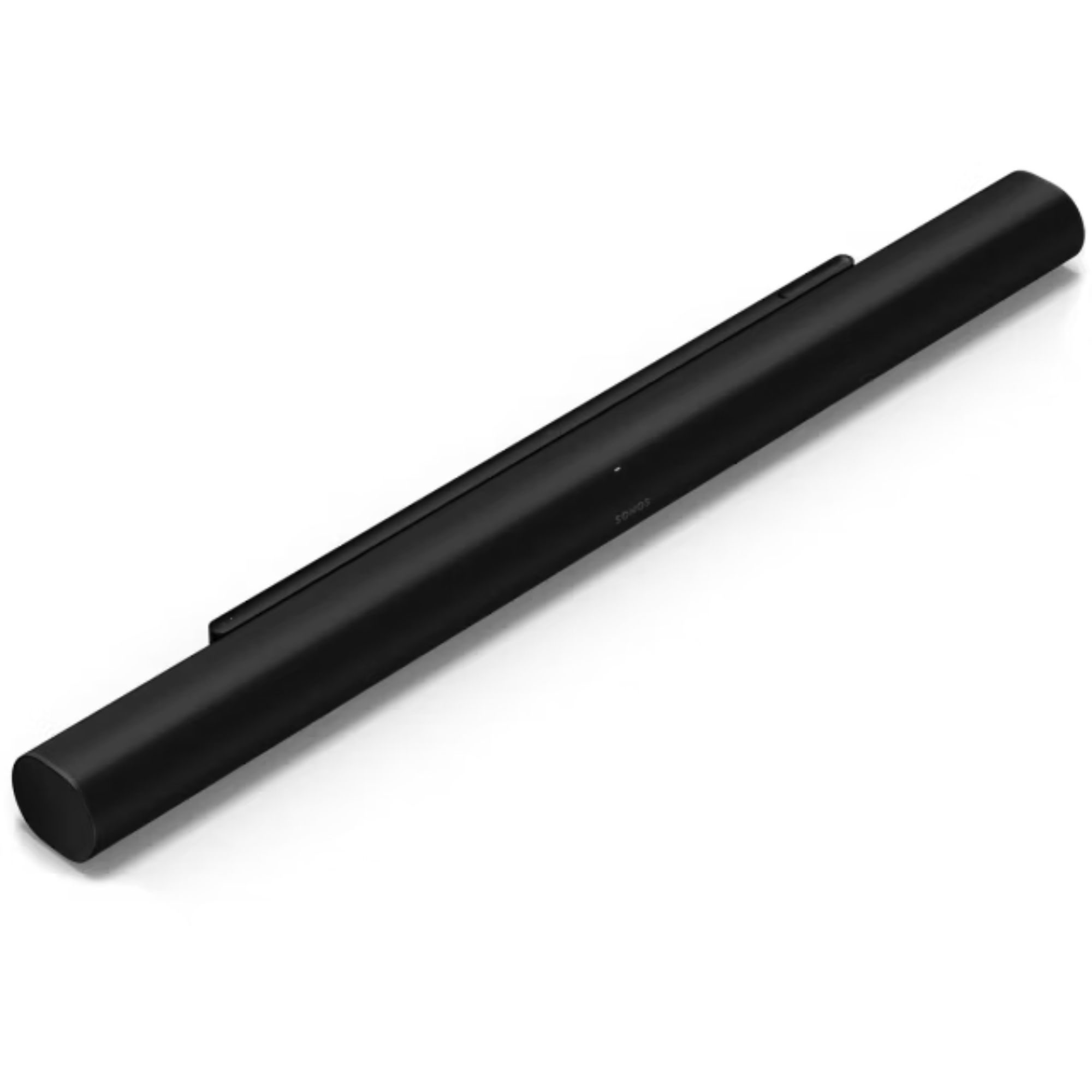
The best soundbar, if you can afford it
The Sonos Arc Ultra delivers some of the clearest, richest, and most powerful sound I've ever heard in a home setup. Its 14 built-in speakers produce a booming surround sound experience that has genuinely transformed how I enjoy my favorite shows, movies, and music. It's expensive for a reason and worth it, in my view.
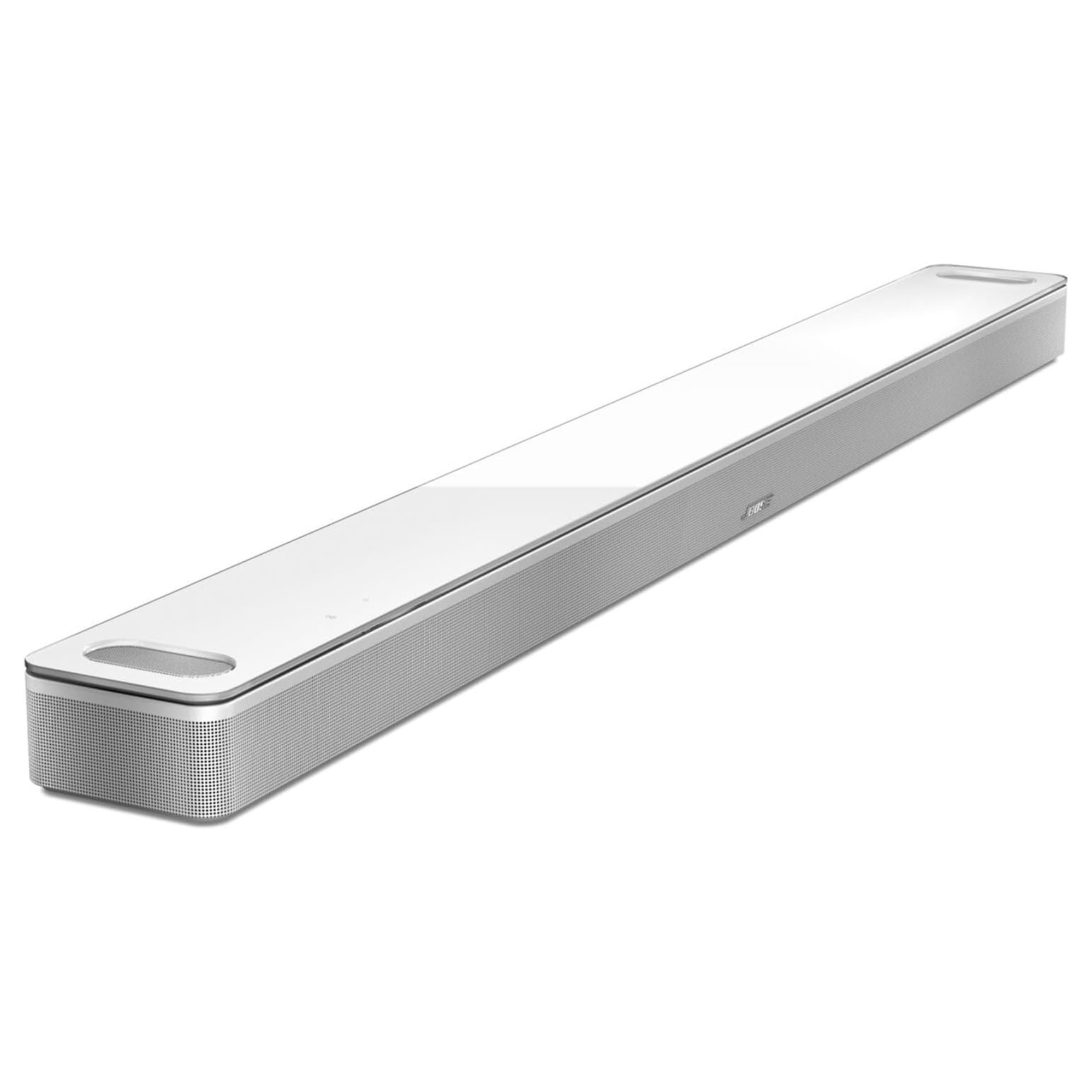
The runner-up best soundbar, with incredible sound in every way
The Bose Smart Ultra Soundbar comes in at a close second behind the Sonos Arc Ultra, boasting hyper-realistic surround sound and awe-inspiring detail. It makes vocals and music sound more lush than usual, and its bass chambers deliver deep, powerful booms.
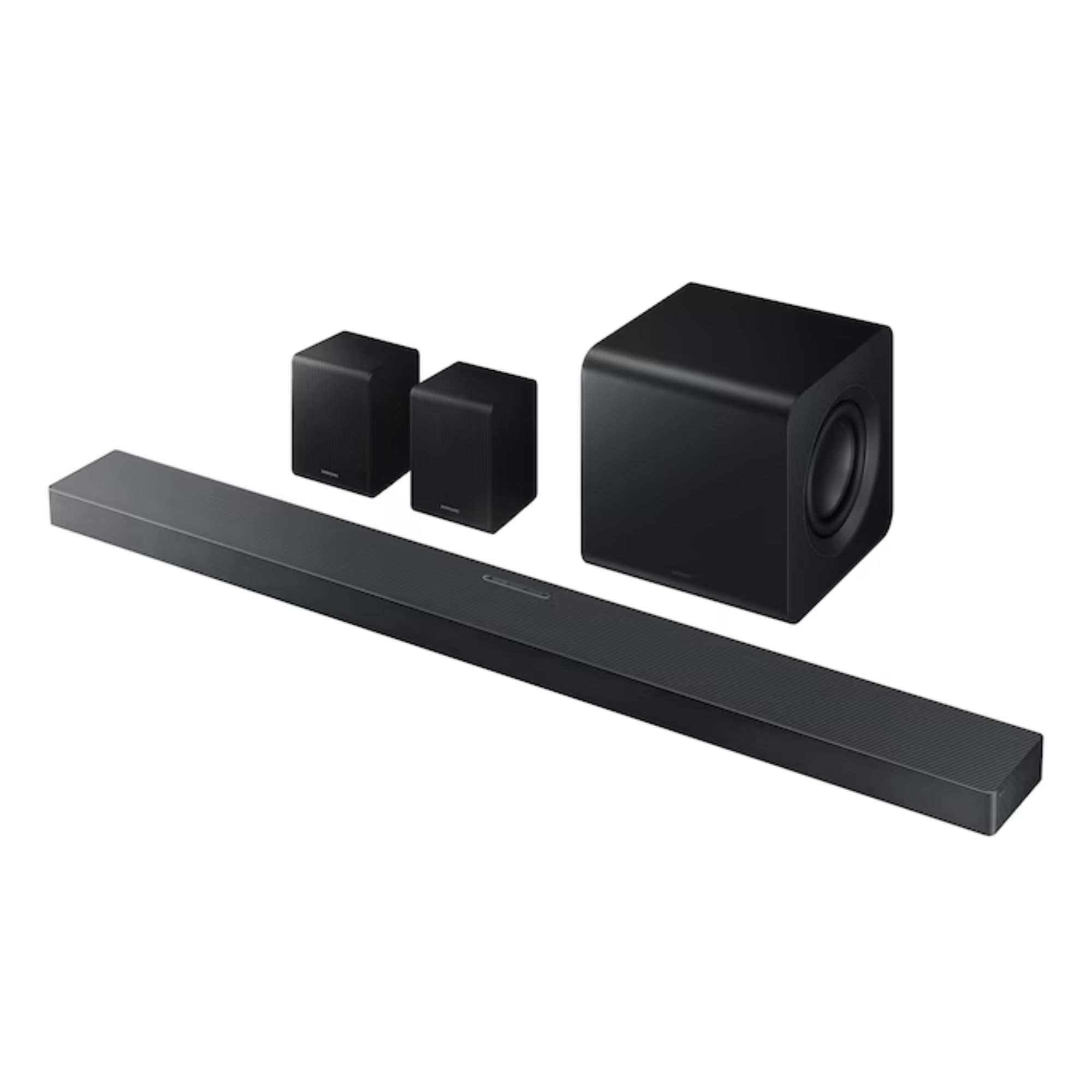
The best soundbar for customizing the sound
As it's made up of a soundbar, subwoofer, and two surround speakers, the Samsung HW-QS750F offers advanced audio adjustment to tailor the sound to whatever TV show, movie, or music you're listening to. It takes up a little more space, but once it's all set up, it sounds incredible, with strong bass and gorgeous highs that completely surround you.
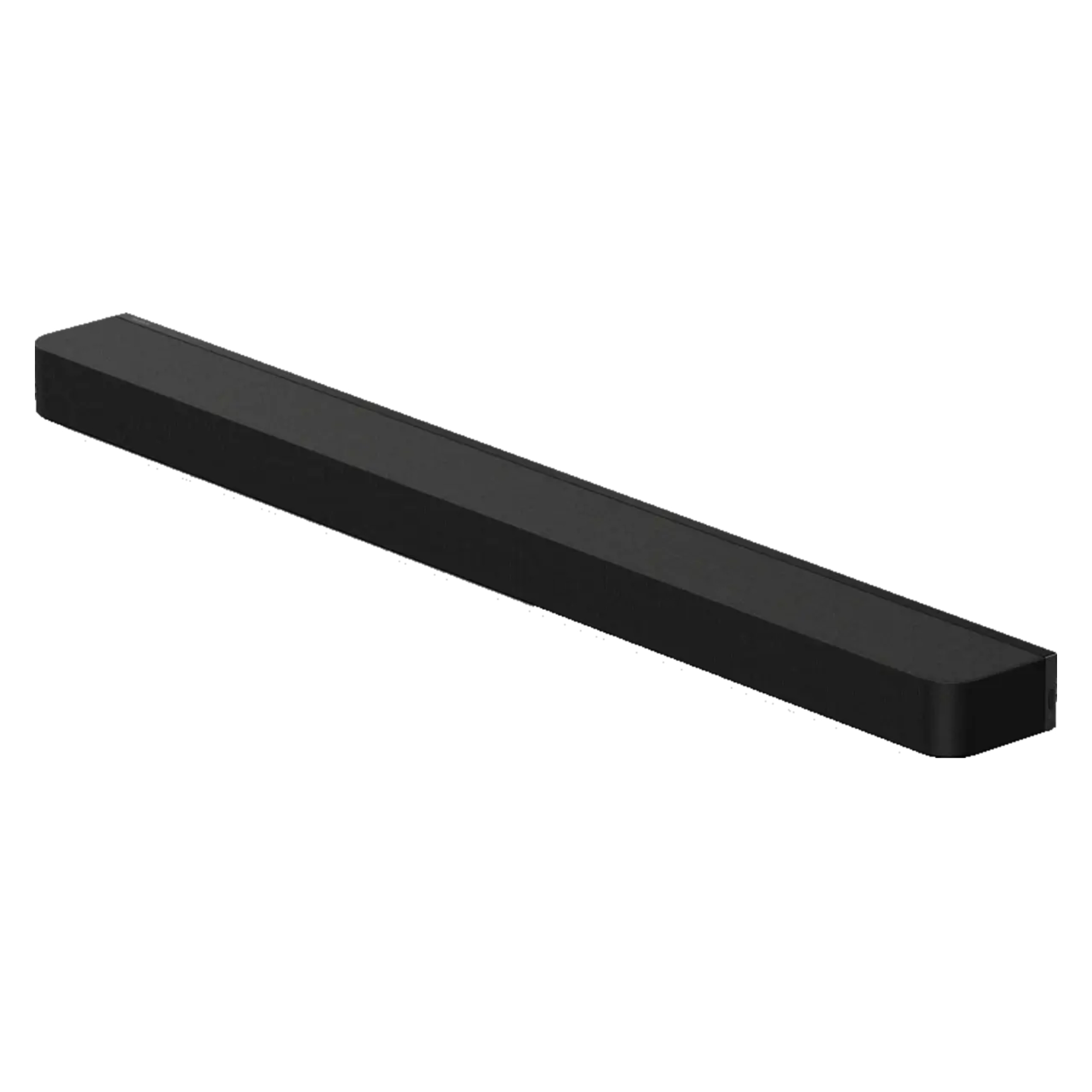
The best surround sound from a single soundbar
The room-filling audio of the Sony BRAVIA Theater Bar 8 is so realistic that it's easy to forget that it's all coming from one device. The sound is incredibly well-balanced, with every fine detail heard clearly and precisely, so much so that passing cars and wind can be heard in the background of film and TV scenes. It really pulls you in.
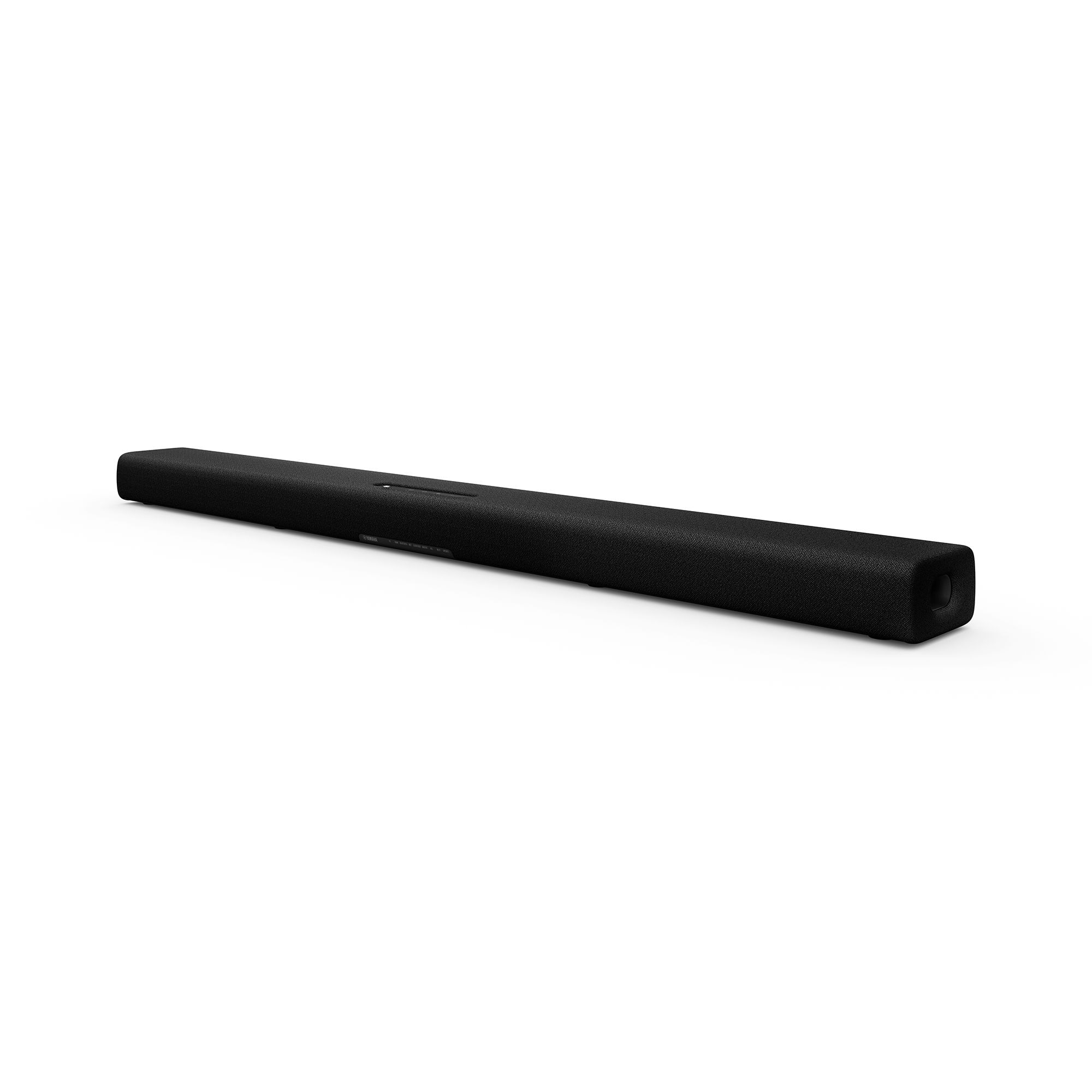
The best mid-range soundbar, with vibrant, amplified sound
The Yamaha True X Bar 40A delivers above its weight, producing sound that's clear, impactful, deep, and colorful. It costs $100s less than the premiums from Sonos and Bose, yet holds its own with clear vocals and deep bass.
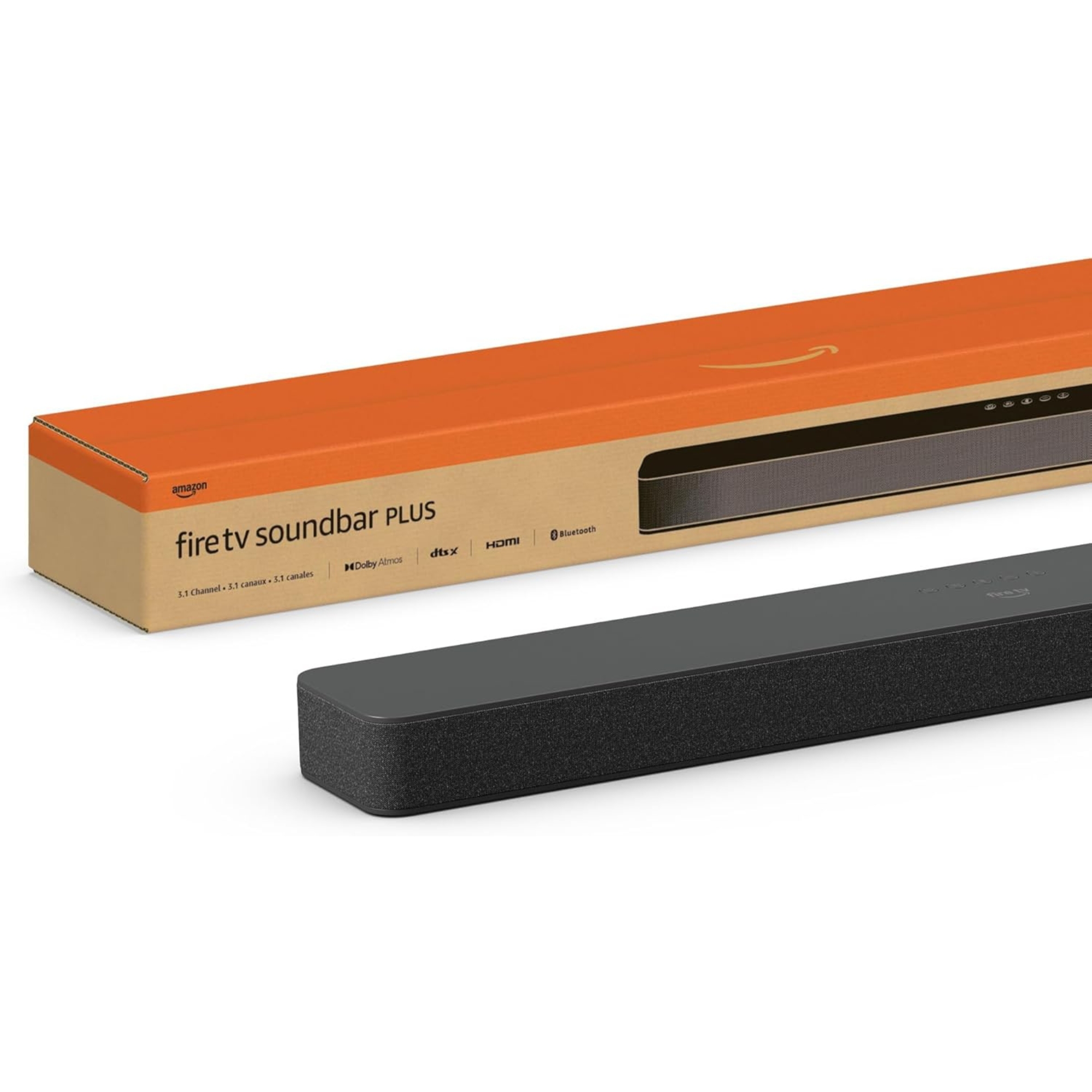
The best budget soundbar, packing a surprising punch
To save big while upgrading your home entertainment, the Fire TV Soundbar Plus' two subwoofers and Dolby Atmos compatibility make it stand tall above the other budget soundbars, delivering sound that's much deeper and fuller than you'll ever get from your TV.
Soundbar | Speakers | Channel configuration | Plug-and-play? | App setup | Subwoofer? | Dolby Atmos? | Bluetooth? |
Sonos Arc Ultra | 14 | 9.1.4 | Yes, 2-min setup | Easy, 5 minutes | Yes (one built-in, four-motor Sound Motion woofer) | Yes | Yes |
Bose Smart Ultra Soundbar | 9 | 5.1.2 | No, needs app activation | 15-min setup, potential connectivity issues | Yes (two built-in bass chambers) | Yes | Yes |
Samsung HW-QS750F | 10 | 5.1.2 | Yes, 5-10 min setup | Easy, 5 minutes | Yes (separate unit, included) | Yes | Yes |
Sony BRAVIA Theater Bar 8 | 11 | 5.0.2 | Yes, 2-min setup | Easy, 5 minutes | No (optional extra for $799.99) | Yes | Yes |
Yamaha True X Bar 40A | 6 | 2.1.2 | Yes, 2-min setup | Potential connectivity issues | Yes (two built-in subwoofers) | Yes | Yes |
Fire TV Soundbar Plus | 8 | 3.1 | Yes, 2-min setup | No app, all features on remote | Yes (two built-in subwoofers) | Yes | Yes |
The Best Soundbars in 2025
The Best Soundbar

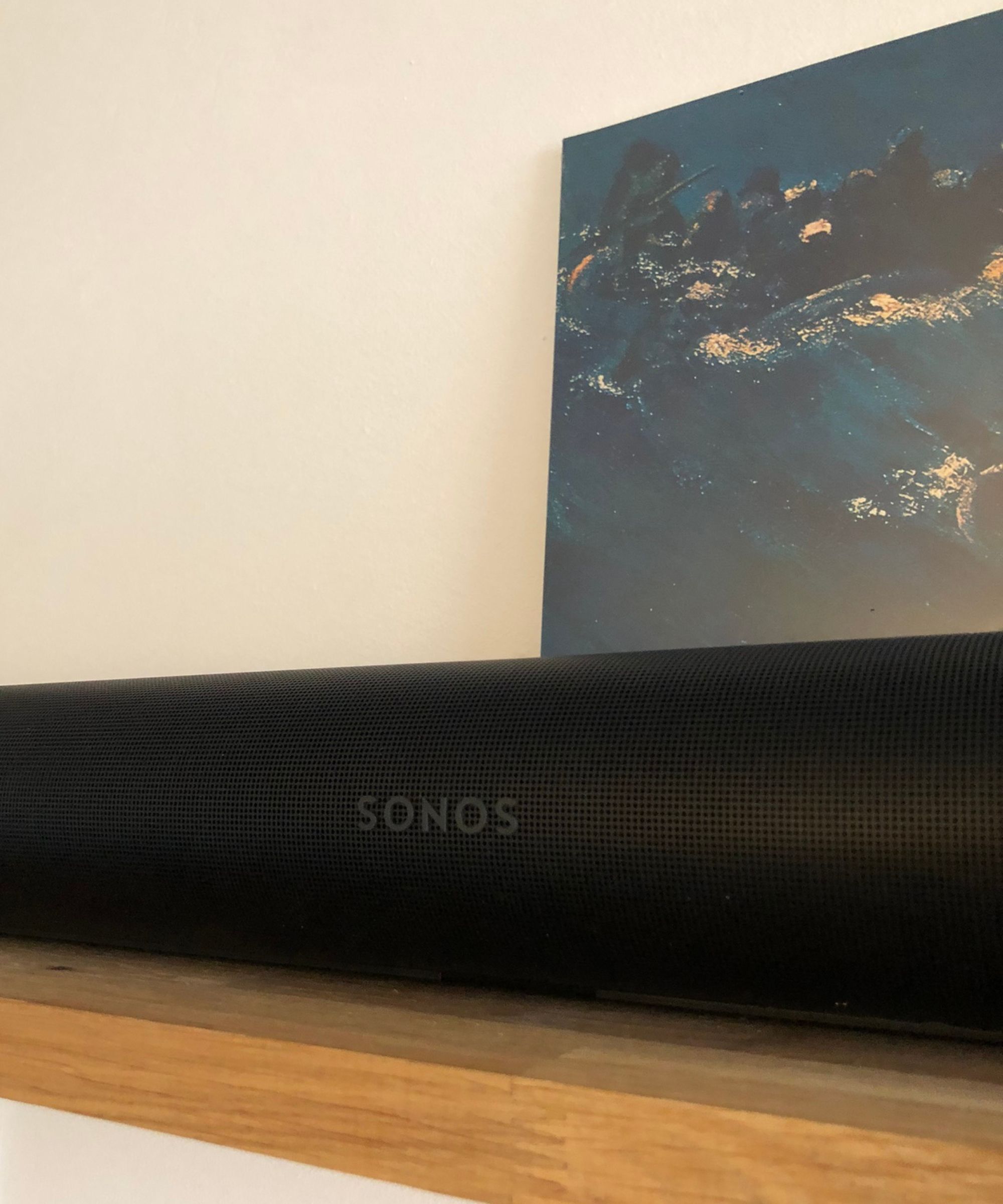
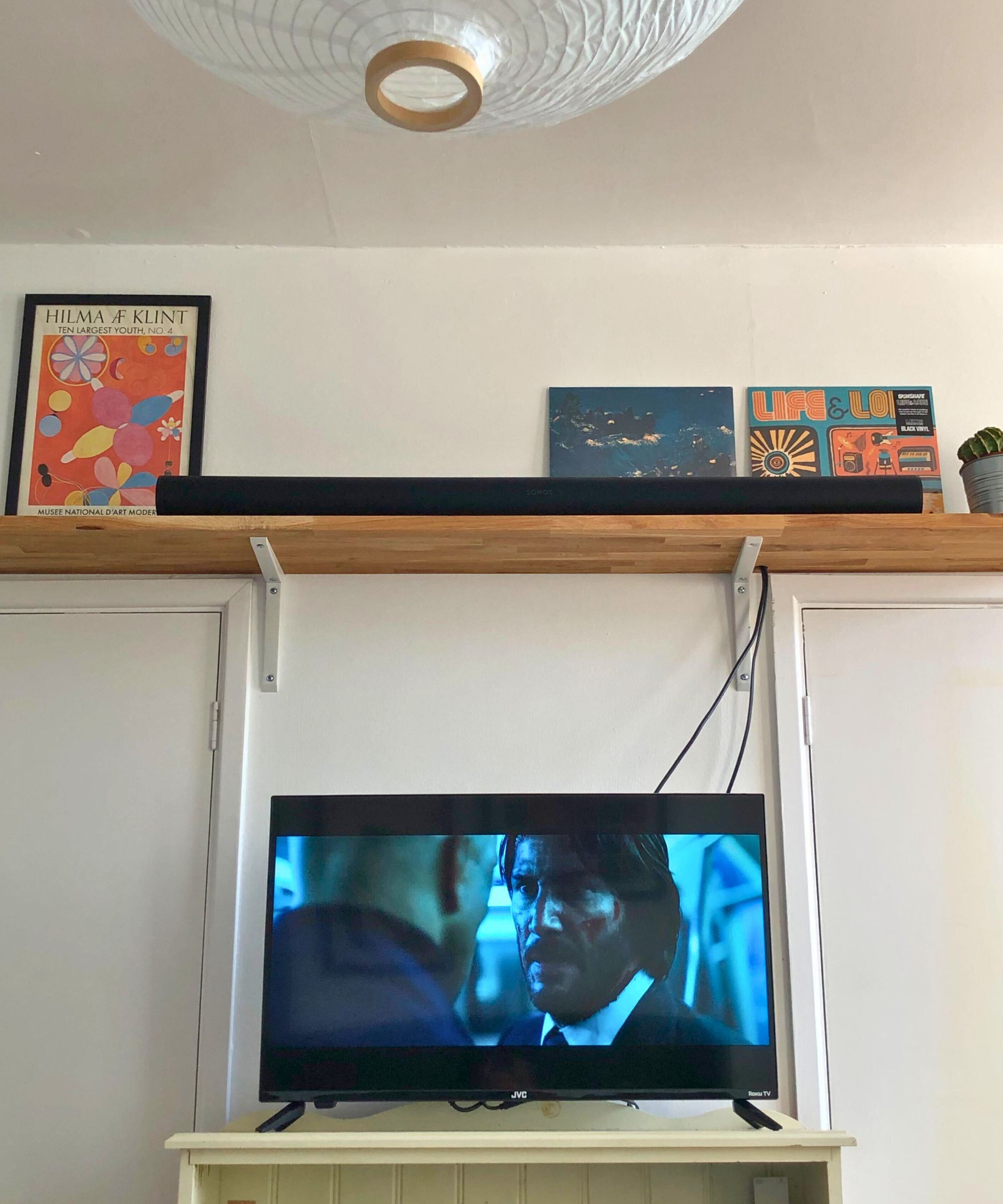
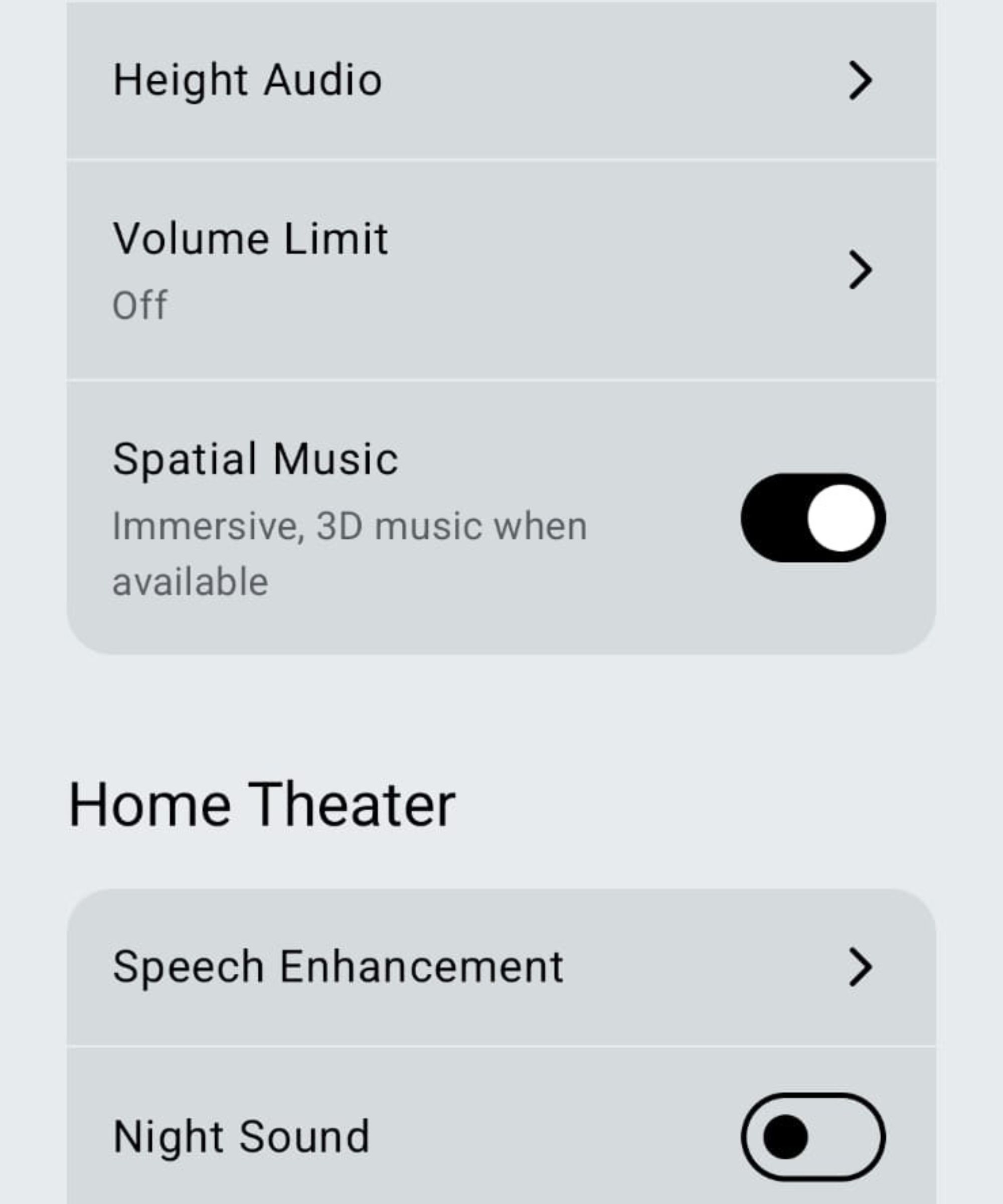
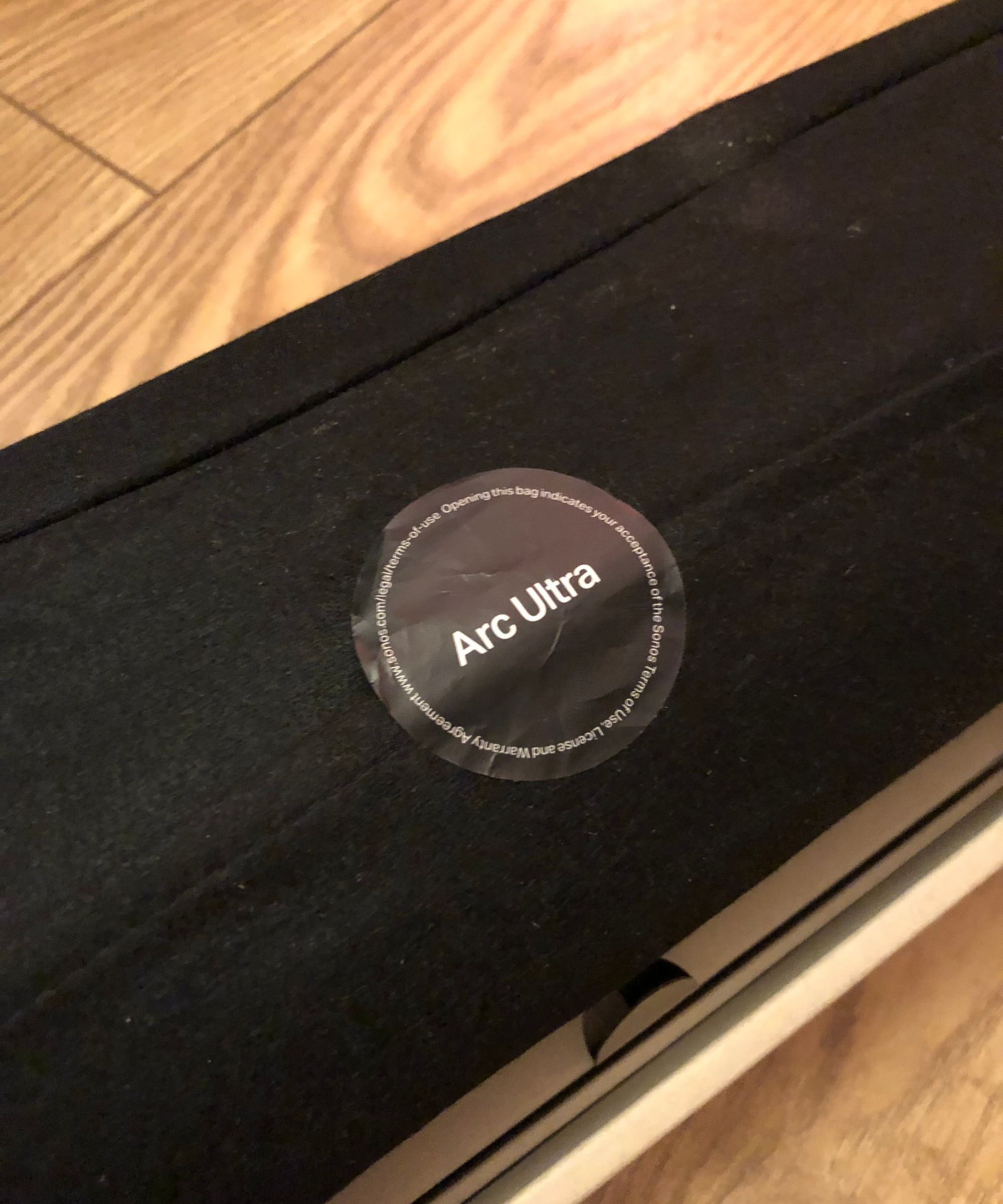
1. Sonos Arc Ultra
The best soundbar for TV, movies, and music (if you can afford it)
Control: Touch, voice, app, TV remote | Speakers: 14 | Channel configuration: 9.1.4 | Subwoofer?: Yes, built-in | Dolby Atmos?: Yes | Bluetooth?: Yes, Bluetooth 5.3 | Supports: Sonos Voice Control, Amazon Alexa, Apple AirPlay 2, Spotify Connect
In virtually every aspect, the Sonos Arc Ultra is the best soundbar you can buy. The audio quality is genuinely exhilarating, and as an audiophile who's listening to music at any given moment, it ignited a new love for the songs I've been enjoying for years.
It didn't matter what it was playing. Whether booming action, tense dialogue, jazz, electronic, or even a David Attenborough documentary – the Arc Ultra sounded incredible. Every big moment had depth, every subtle element was clear, and the sound completely fills the room once you set up Trueplay, which learns the shape and acoustics of your room to optimize the sound.
It makes sense why the Arc Ultra is so wide. Having 14 built-in speakers – including seven silk-dome tweeters, six midwoofers, and a four-motor subwoofer – it's designed to deliver a soundscape that's true to form, with songs, shows, and movies sounding exactly how they were intended to. It almost sounds as if you have a whole sound system in place. I was surprised that a single soundbar could deliver such rich detail.
The sophisticated soundbar is perfect for a music room or a movie room. And if you have close-by neighbors, roommates, or family members who might not enjoy the Arc Ultra's sonorous noise, you can activate Night Mode, which does a fantastic job of muting the high-impact sounds while highlighting the quieter ones.
There are plenty more features too, like Speech Enhancement that can draw out voices in a busy scene, and Spatial Music that can make music sound '3D' (essentially surround sound).
If you have any other Sonos products, like the best-selling Sonos Era 100, the music can follow you as you move around the house, and you can select which speakers the audio comes out from. And with Bluetooth and Wi-Fi connectivity, Sonos has designed a soundbar that's future-proofed for modern (and evolving) smart home setups.
Read more in my five-star Sonos Arc Ultra review.
The Runner-Up Best Soundbar

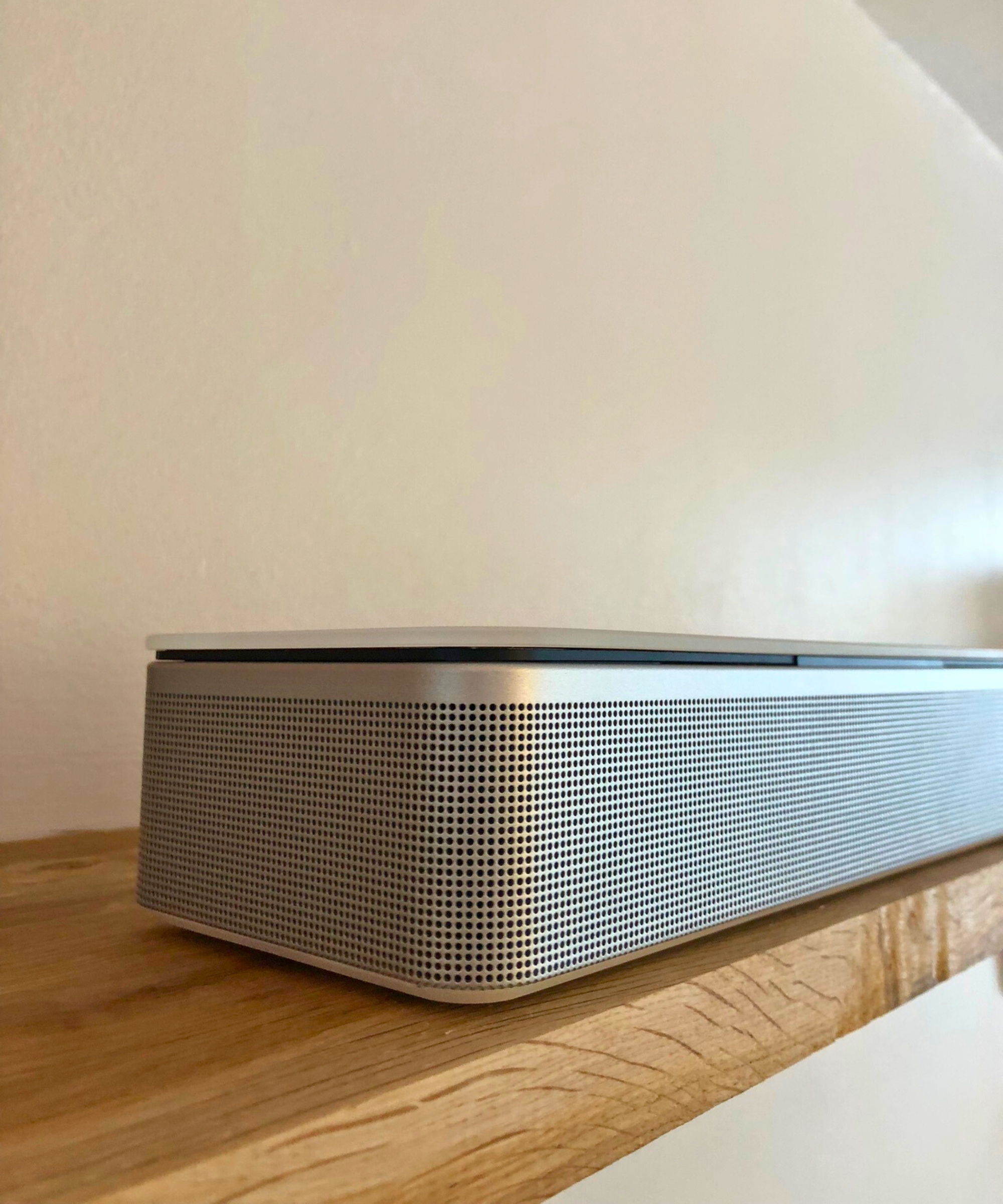
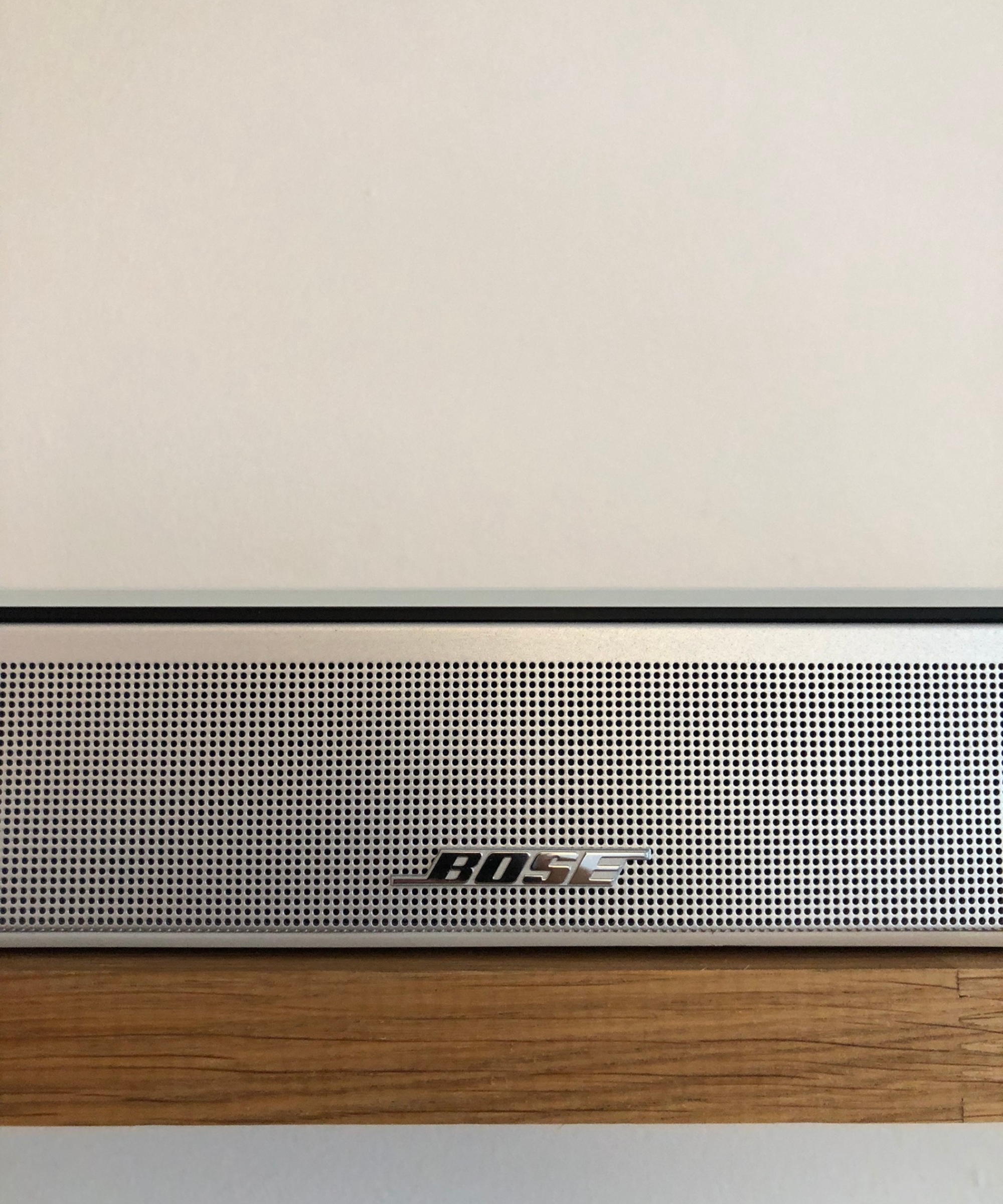
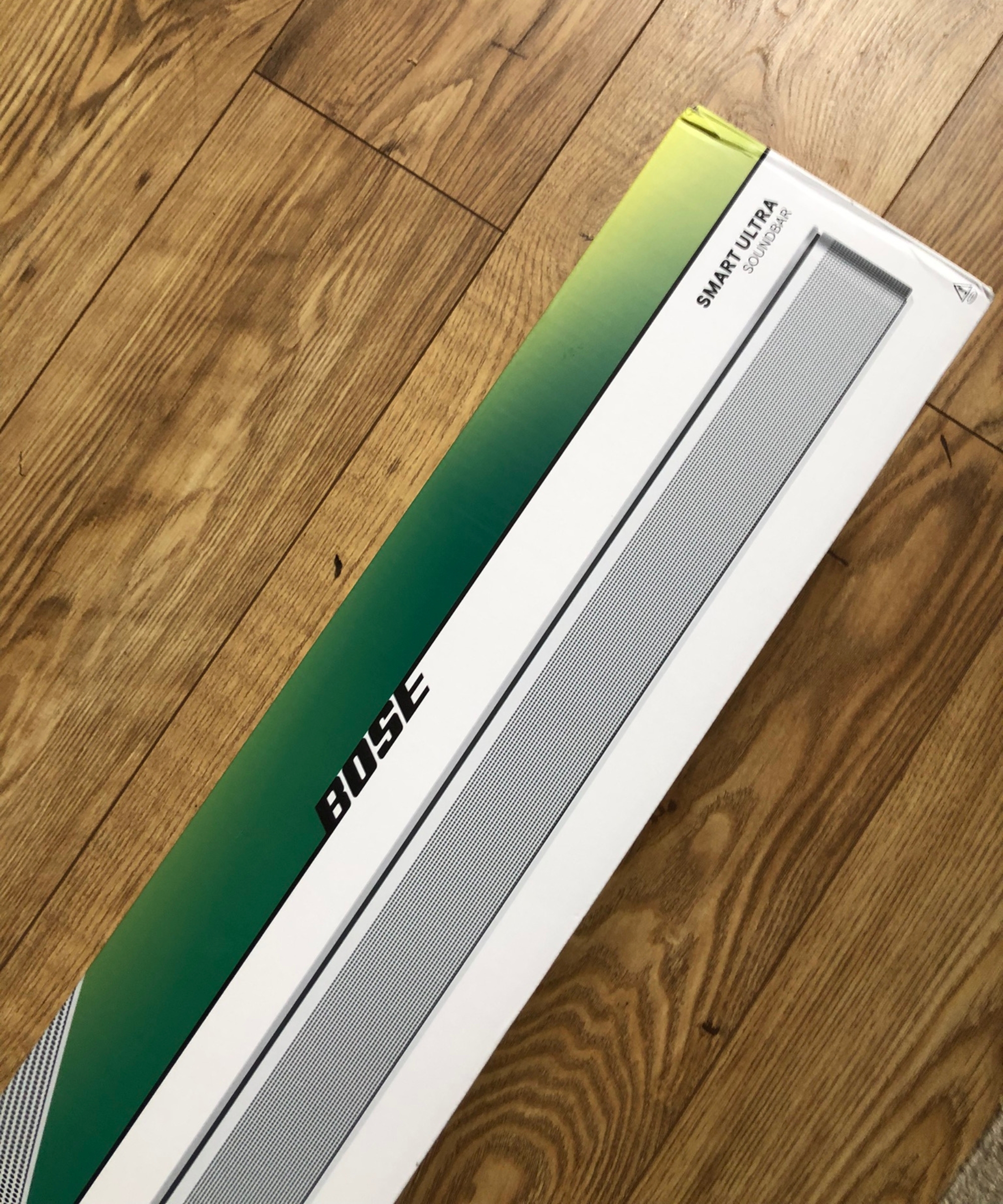
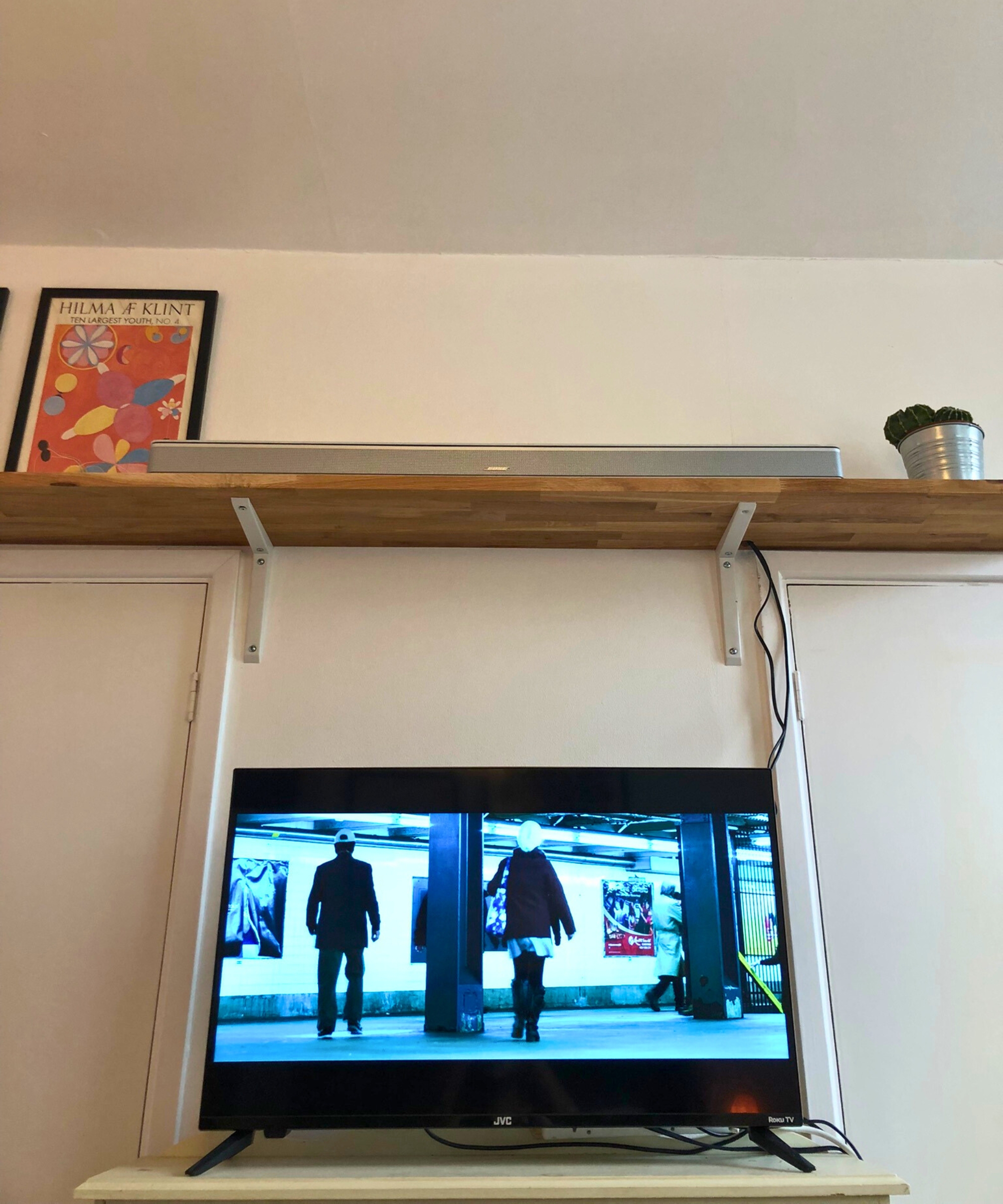
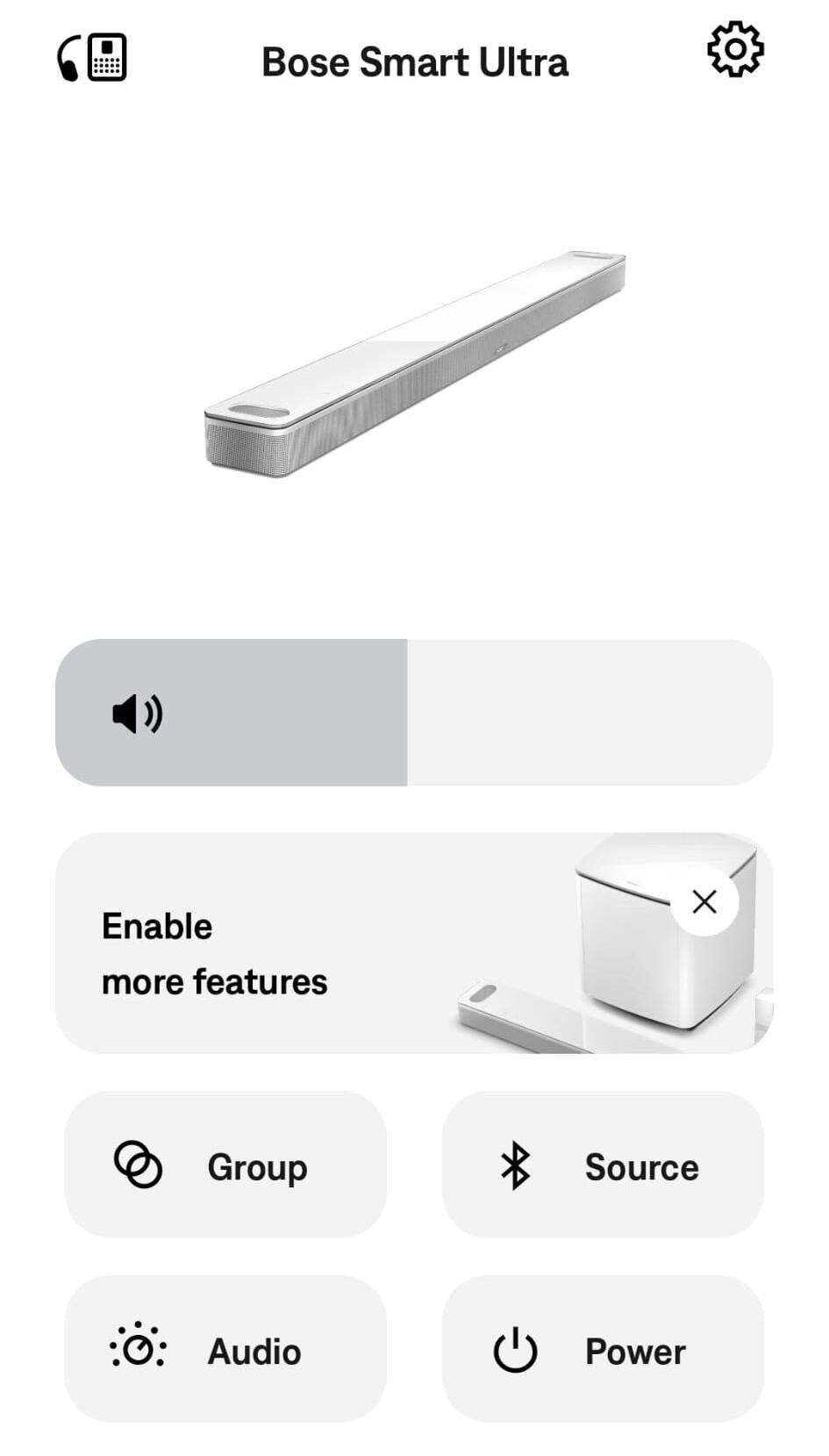
2. Bose Smart Ultra Soundbar
A close runner-up, with exceptional detail and realistic surround sound
Control: Voice, soundbar remote, TV remote, app | Speakers: 9 | Channel configuration: 5.1.2 | Subwoofer?: Yes, built-in | Dolby Atmos?: Yes | Bluetooth?: Yes, Bluetooth 5.3 | Supports: Apple AirPlay 2, Chromecast, Spotify Connect
Straight away, it was clear during testing that the Bose Smart Ultra Soundbar produces beautifully balanced sound. Every detail is clear – and as loud as it's supposed to be – and the soundbar delivers booming bass and gorgeous trebles.
It costs $100 less than the Sonos Arc Ultra, and that's a fair price difference when you compare the two. The Sonos does sound better, which is no surprise considering its five extra speakers, but it's only marginally better. It has deeper bass, more realistic surround sound, and a better sound balance – but if you'd never heard both of them, you wouldn't think that the Bose is lacking whatsoever.
In fact, there aren't many single soundbars I'd recommend more than the Bose Smart Ultra Soundbar. Its balance and surround sound is next-level: I could distinctly hear noises approaching from different directions, every voice sounded like it was in the room, and deep noises and rumbles boom beneath your feet.
Something unique about the Bose Smart Ultra Soundbar is how it can make trebles (the higher frequencies) sound more pleasant than usual. I heard this most when listening to music – brass, strings, vocals, and synths all sounded dreamy, adding a welcome floaty feeling to every song.
What's more, the realistic surround sound I heard during TV shows and movies was present when listening to music, too. During Ramble On by Led Zeppelin, it felt as if I had multiple soundbars dotted throughout my room, each of them playing just one of the band members' instruments.
The surround sound can be upgraded in the future with Bose's subwoofers and surround speakers. The Bose Bass Module 500 is $549, and the two-pack Bose Surround Speakers cost $399 – and these are the most affordable options available.
Setup is longer than any of the soundbars in this guide, however. It isn't plug-and-play, and you have to fully connect it through the app before it starts playing audio. I encountered a few issues during setup and had to mess around with the techy CEC settings for a while until it worked. But there are step-by-step guides online to help if this problem arises.
Available in black or white with a glossy finish, this is the most stylish soundbar I've tested in my view, and I never felt the need to hide the soundbar as it's a visual statement to proudly have on show.
Read more in my full Bose Smart Ultra Soundbar review.
The Best Soundbar for Customization

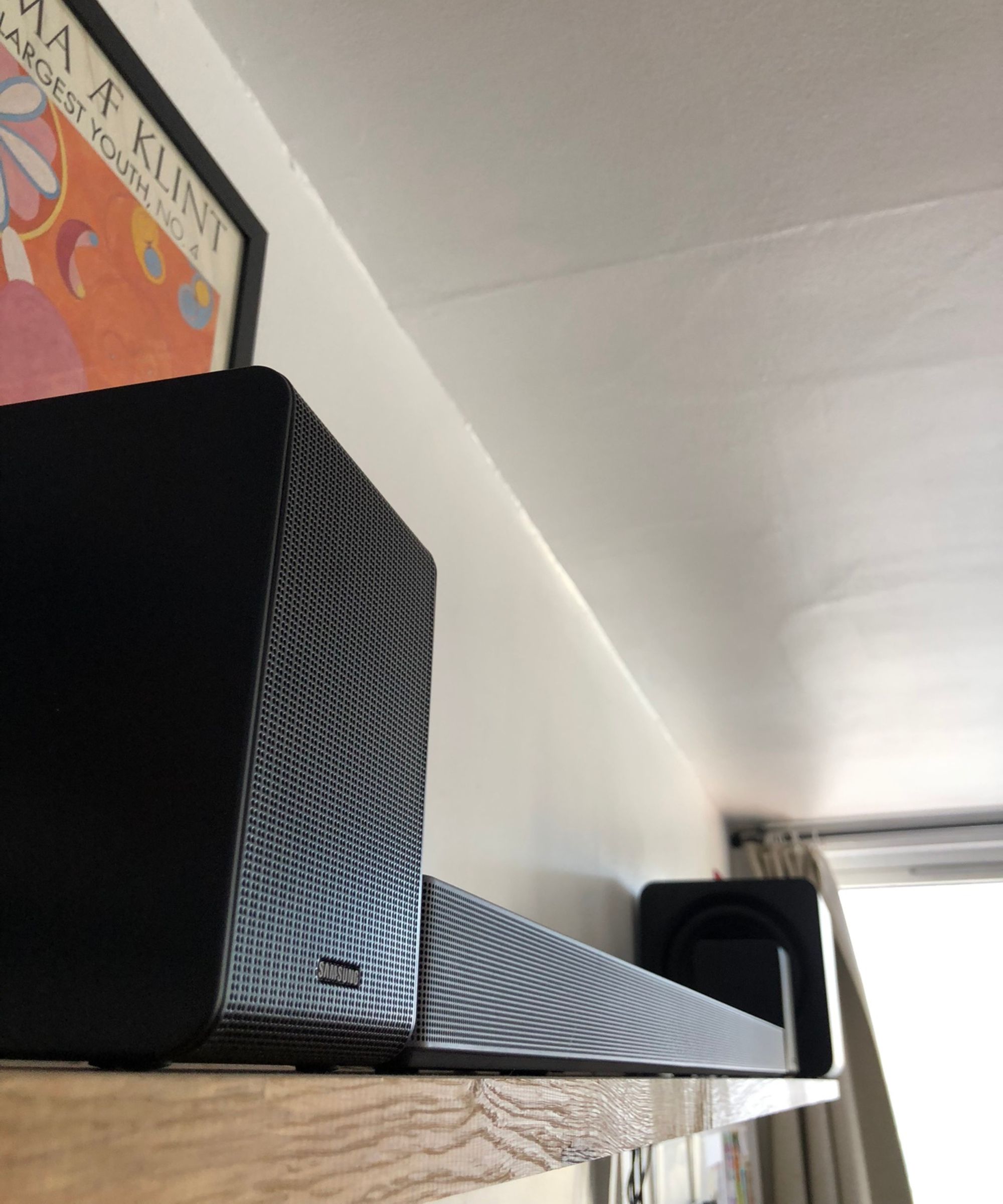
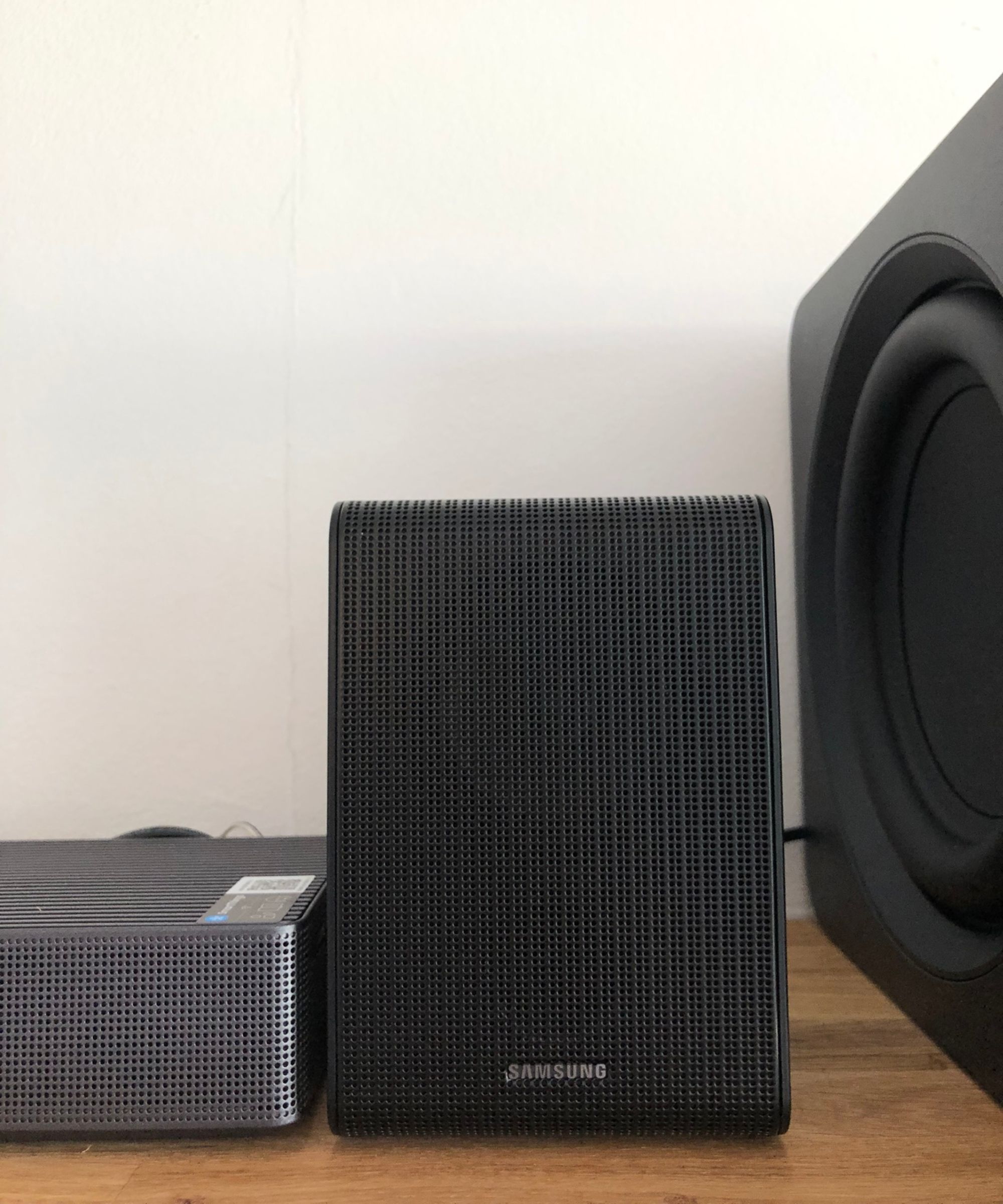
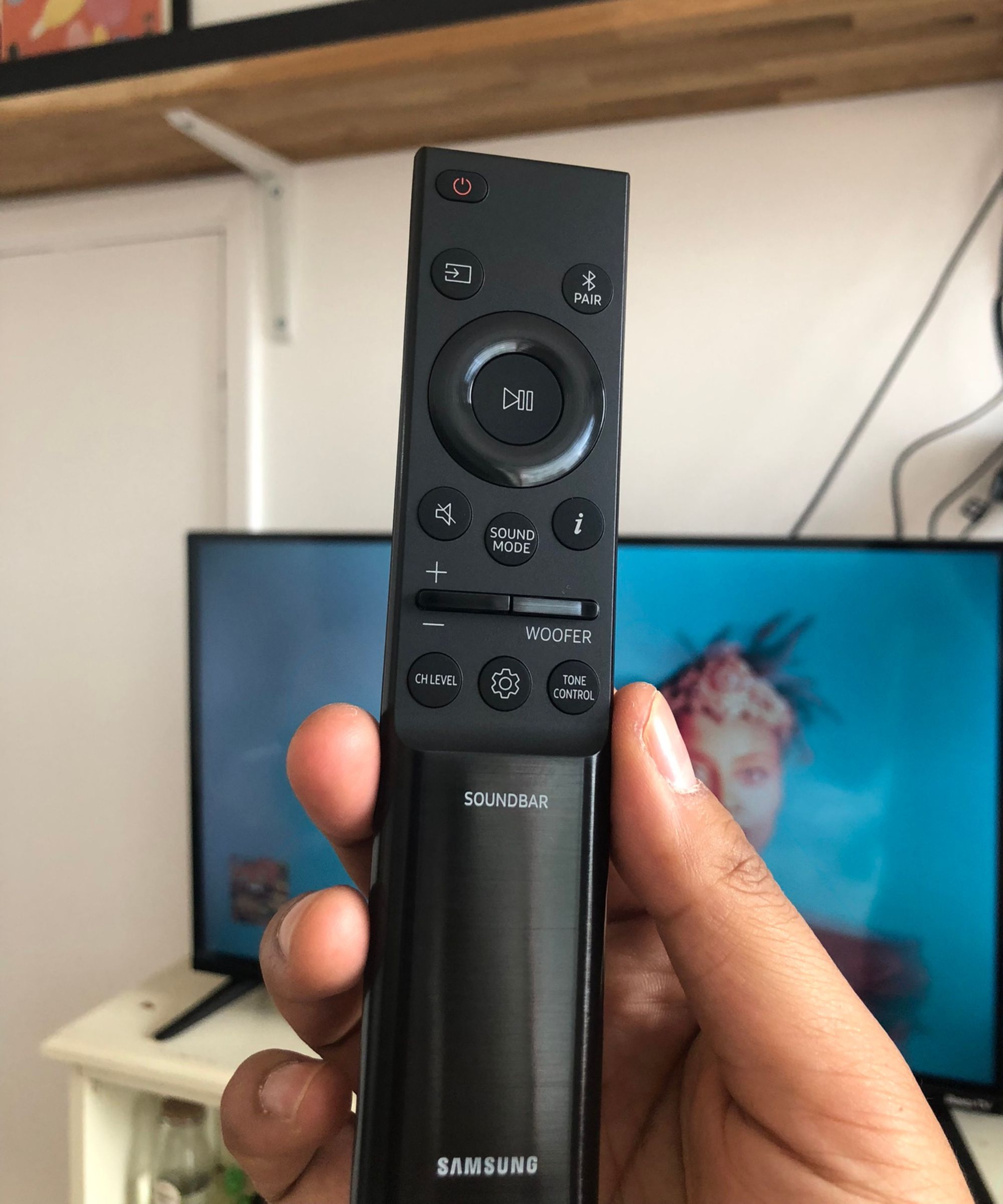
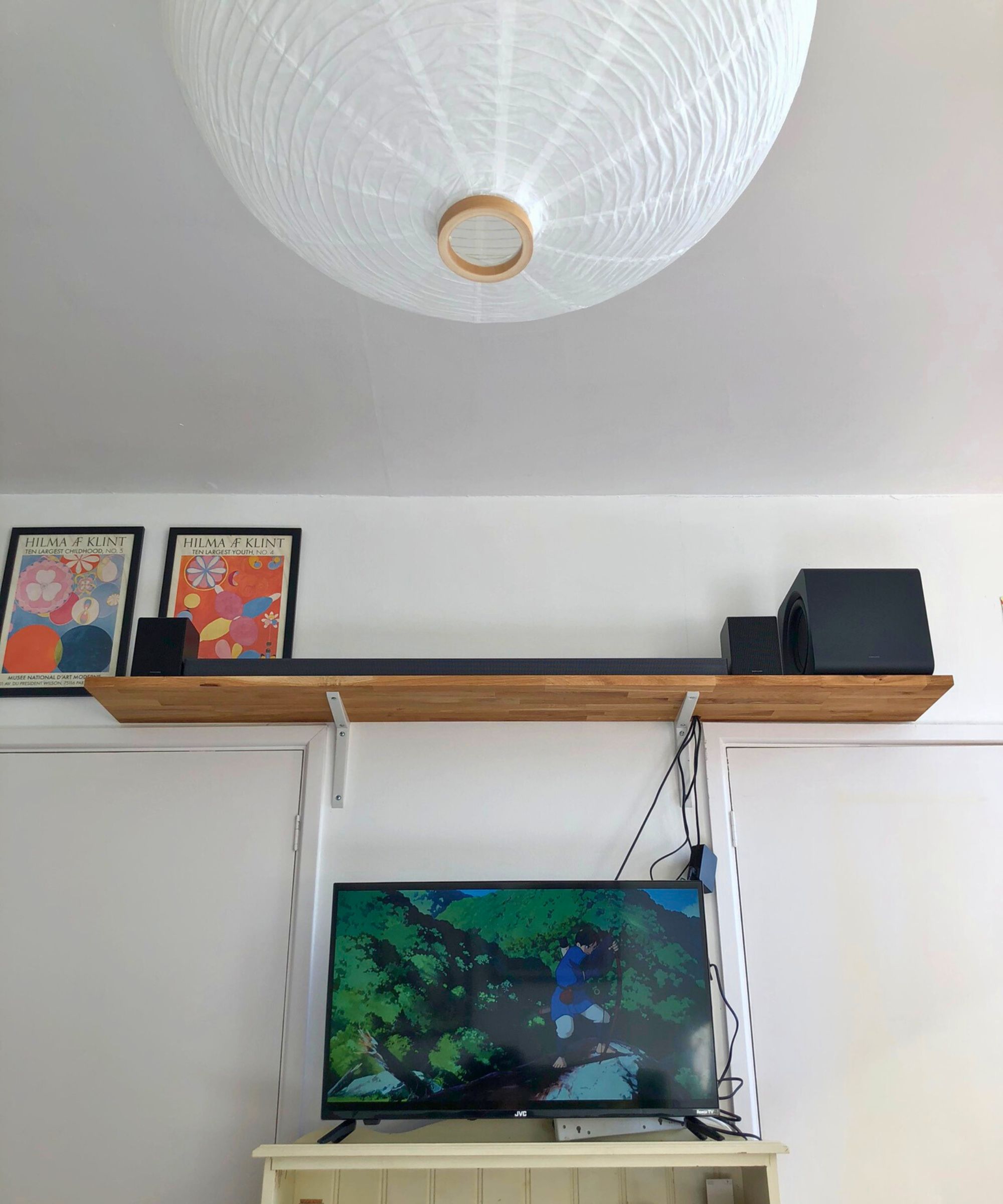
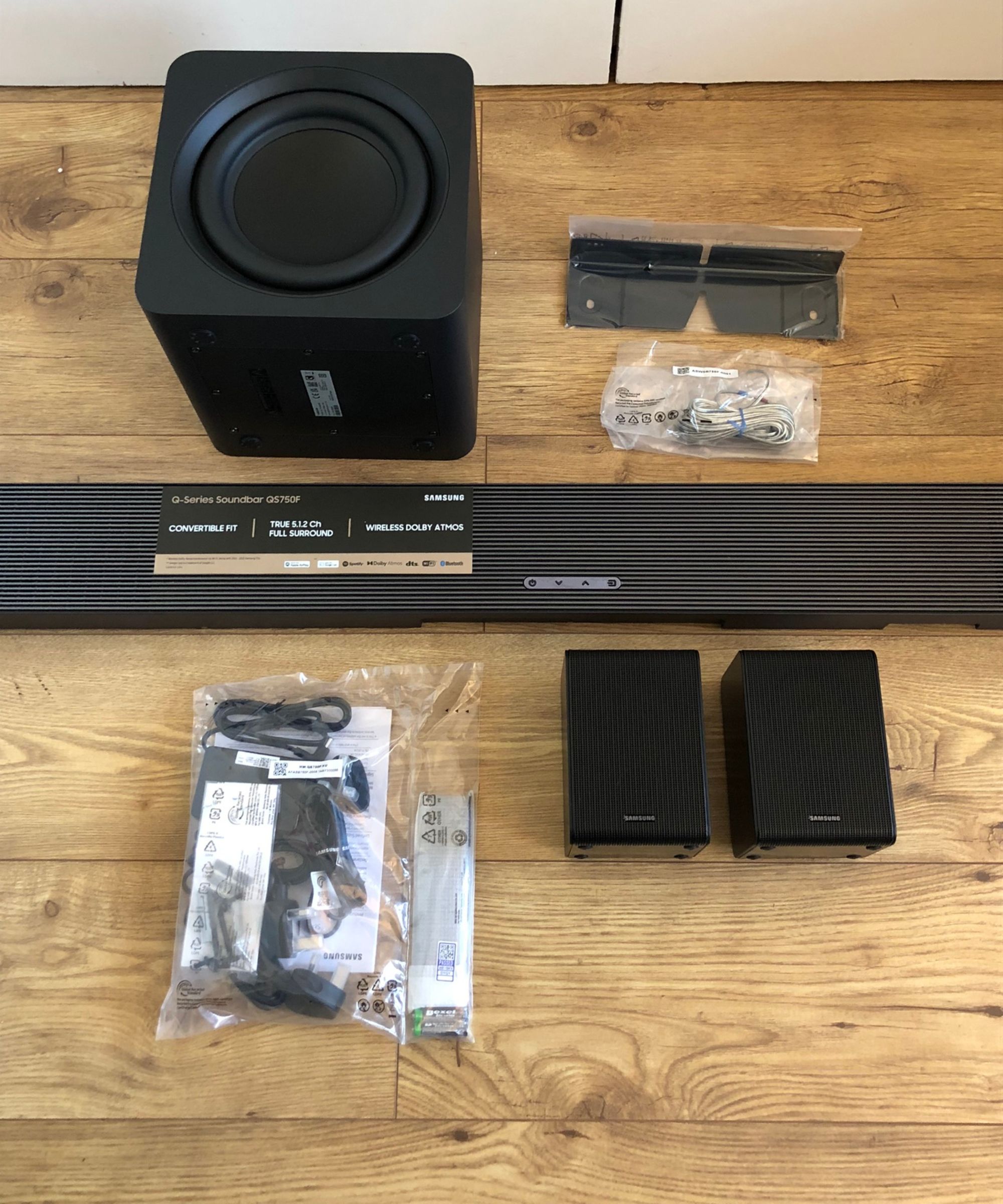
3. Samsung HW-QS750F
The best soundbar for customization, with a dedicated woofer and surround speakers
Control: Soundbar remote, TV remote, app, soundbar buttons | Speakers: 10 | Channel configuration: 5.1.2 | Speaker configuration: Soundbar, subwoofer, two surround speakers | Dolby Atmos?: Yes | Bluetooth?: Yes, Bluetooth 5.3 | Supports: Google Chromecast, Apple AirPlay, Spotify Connect, Tidal Connect
Instead of spending a premium on a single soundbar, opting for a system with multiple components can be a cheaper alternative, while also granting improved control over each speaker's output.
That's because premium soundbars have a lot of hardware built into them to make them so compact, explaining the high cost. But because of the Samsung HW-QS750F's separate woofer and surround speakers, you can achieve a similar effect as long as you have the extra space needed in your living room. You can always get creative with TV stand ideas.
It costs $799.99 at Best Buy but is frequently on offer for around $599.99, and at that price, I was absolutely not expecting it to sound this good. In almost every TV and movie scene I watched, the audio was deep, crisp, and full with authentic surround sound. The small surround speakers sound a little scratchy when isolated, but as part of the wider soundscape, they add a welcome layer of richness.
And when it came to music – whether hard rock, electronic, hip-hop, or funk – the impact was high, the bass was punchy, and the trebles sounded beautiful. It's a stellar music setup (you can always tell when the subwoofer speaker tremors when the bass hits), and at no point did the bass sound distorted or rattly, even at high volumes. It's real, room-filling sound that does justice to both high-fidelity songs and older, non-remastered classics.
Audio quality aside, the Samsung HW-QS750F has the most customization features I've seen in a soundbar so far. It's so comprehensive that there are four separate settings that all essentially equate to 'quiet mode', but with each having its own sound, whether you're prioritizing bass, depth, clarity, treble, or sharpness.
Read more in my full Samsung HW-QS750F review.
The Best Soundbar for Surround Sound

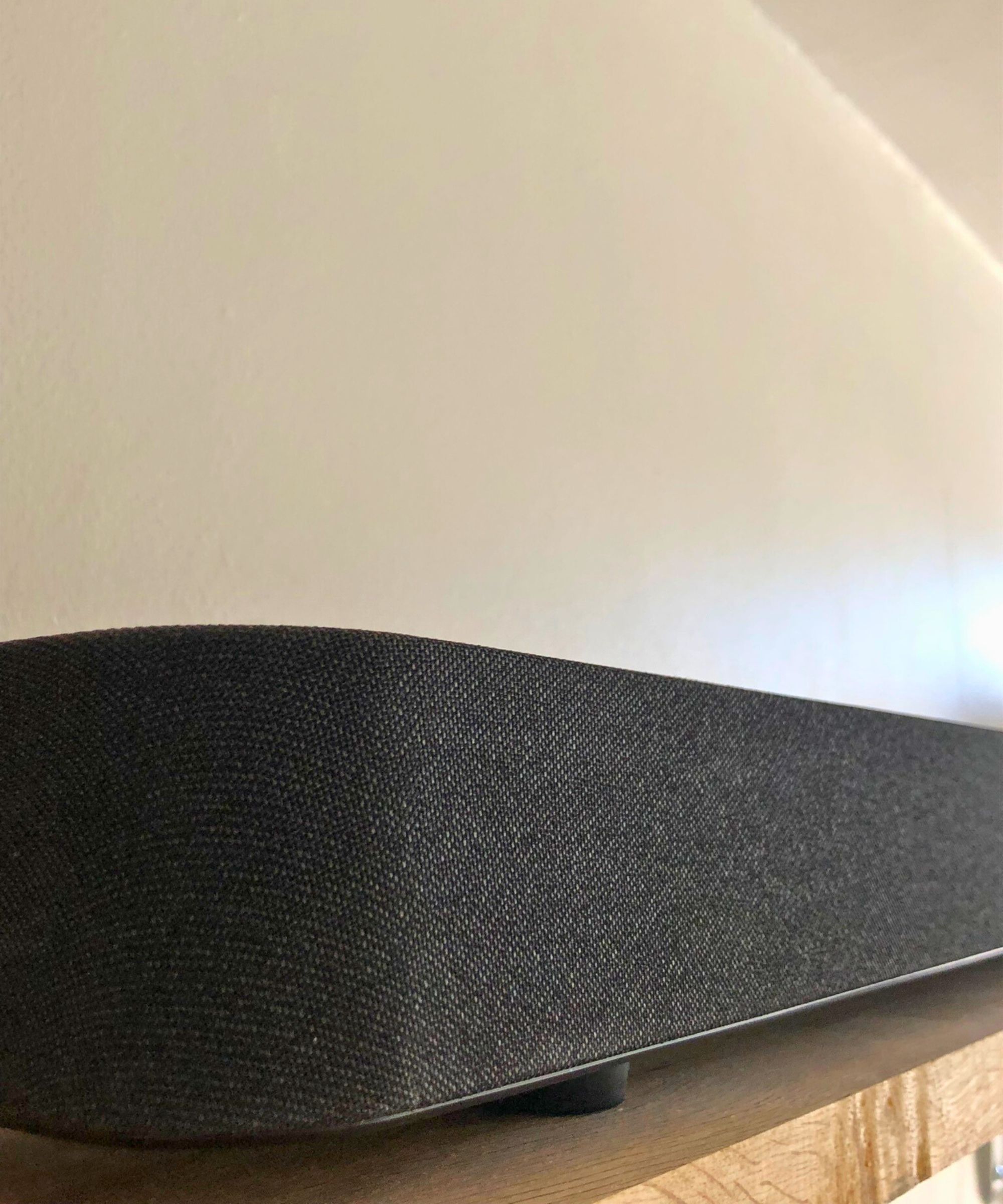
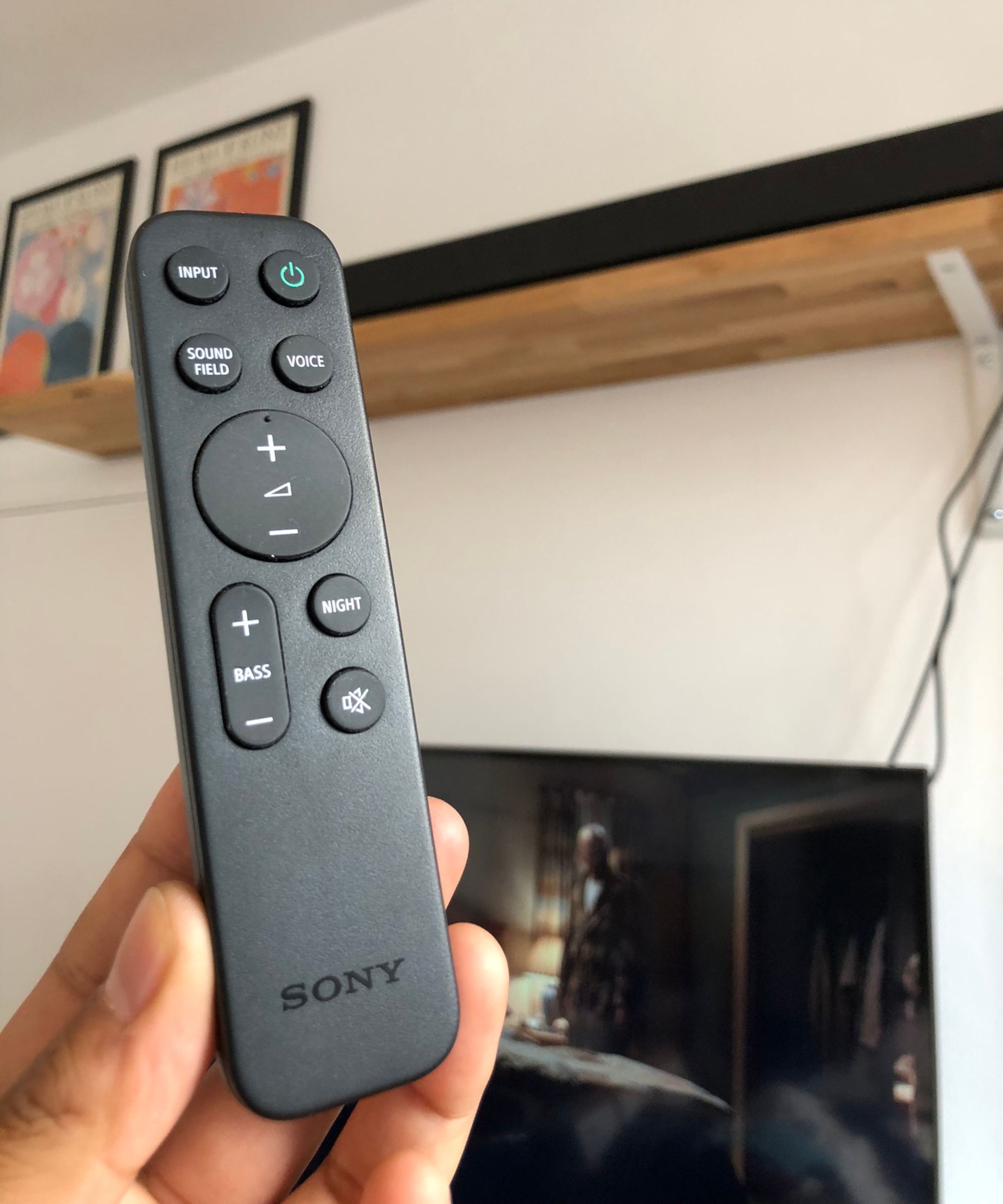
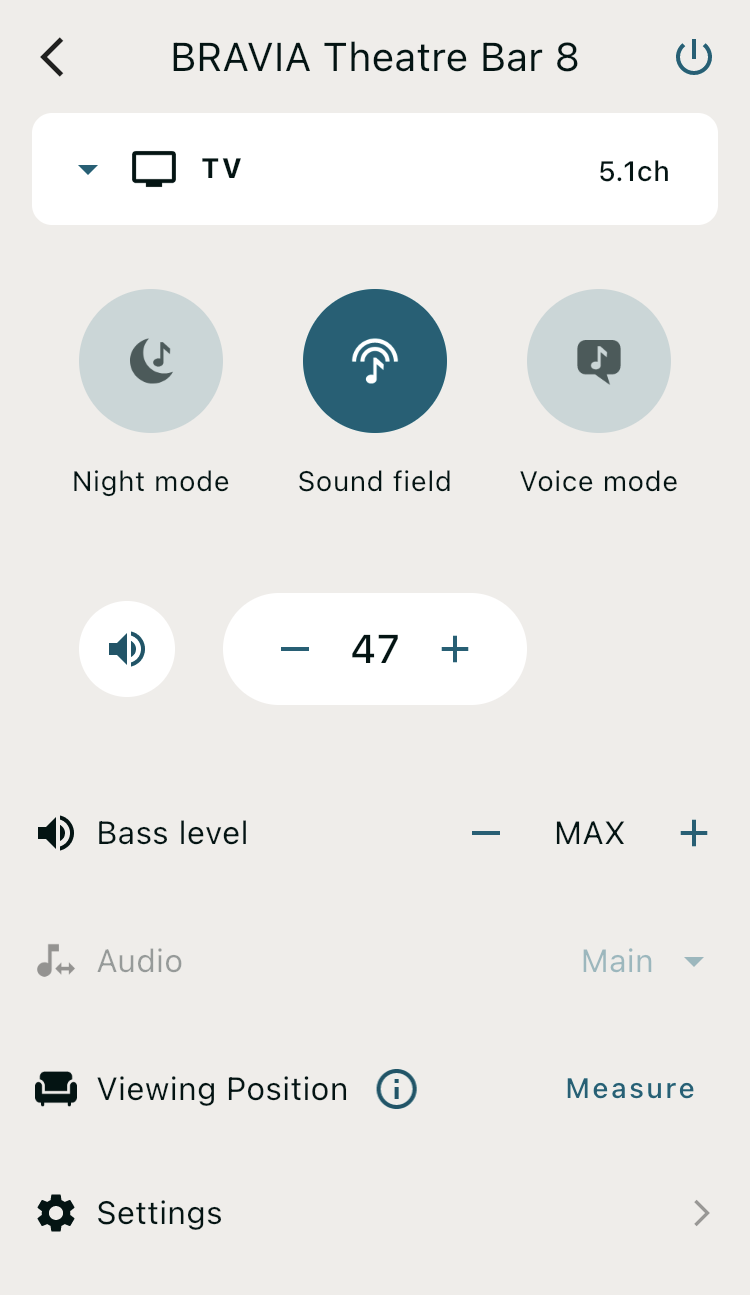
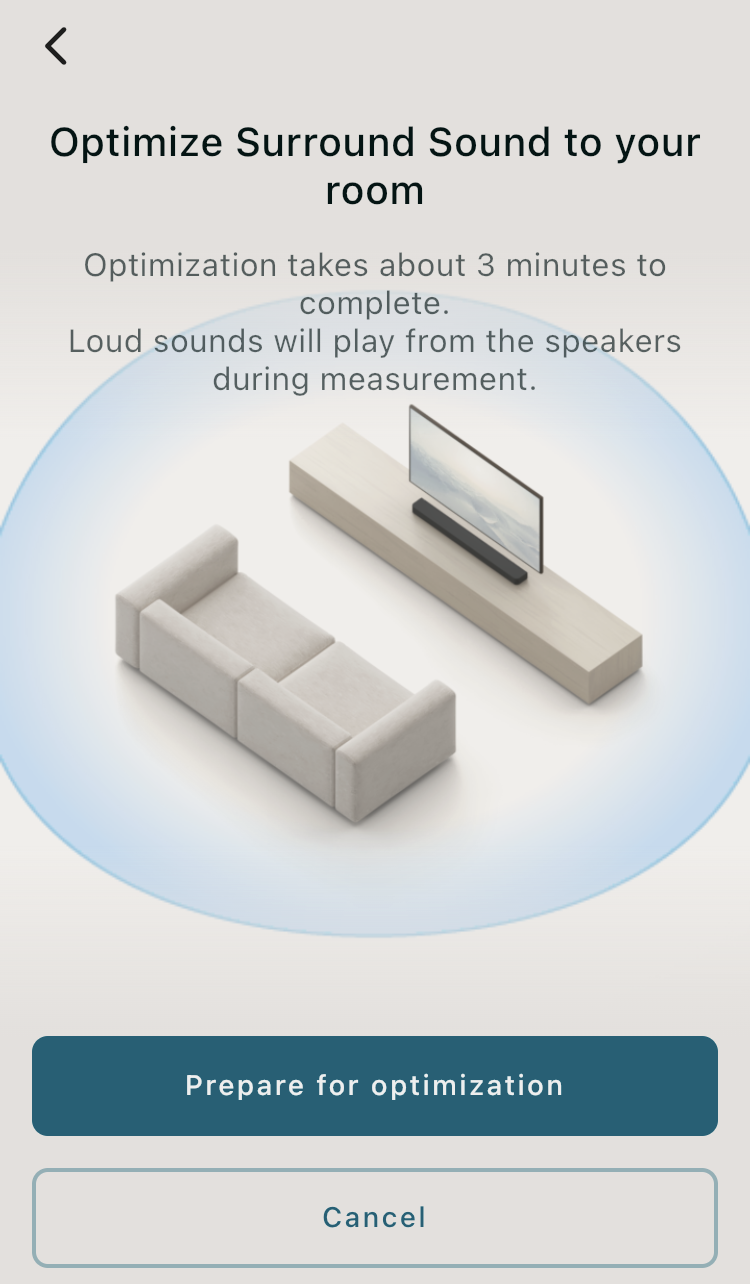
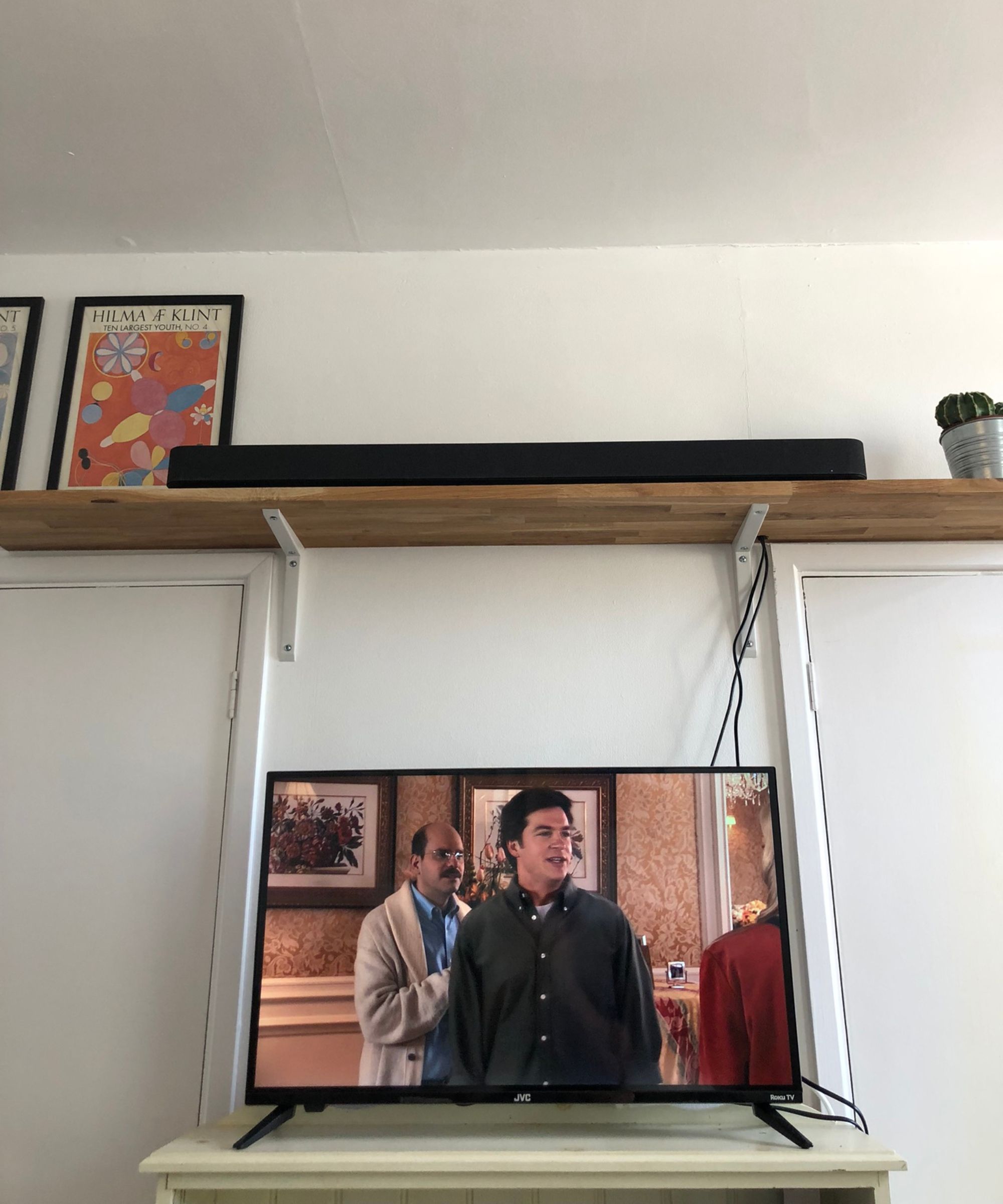
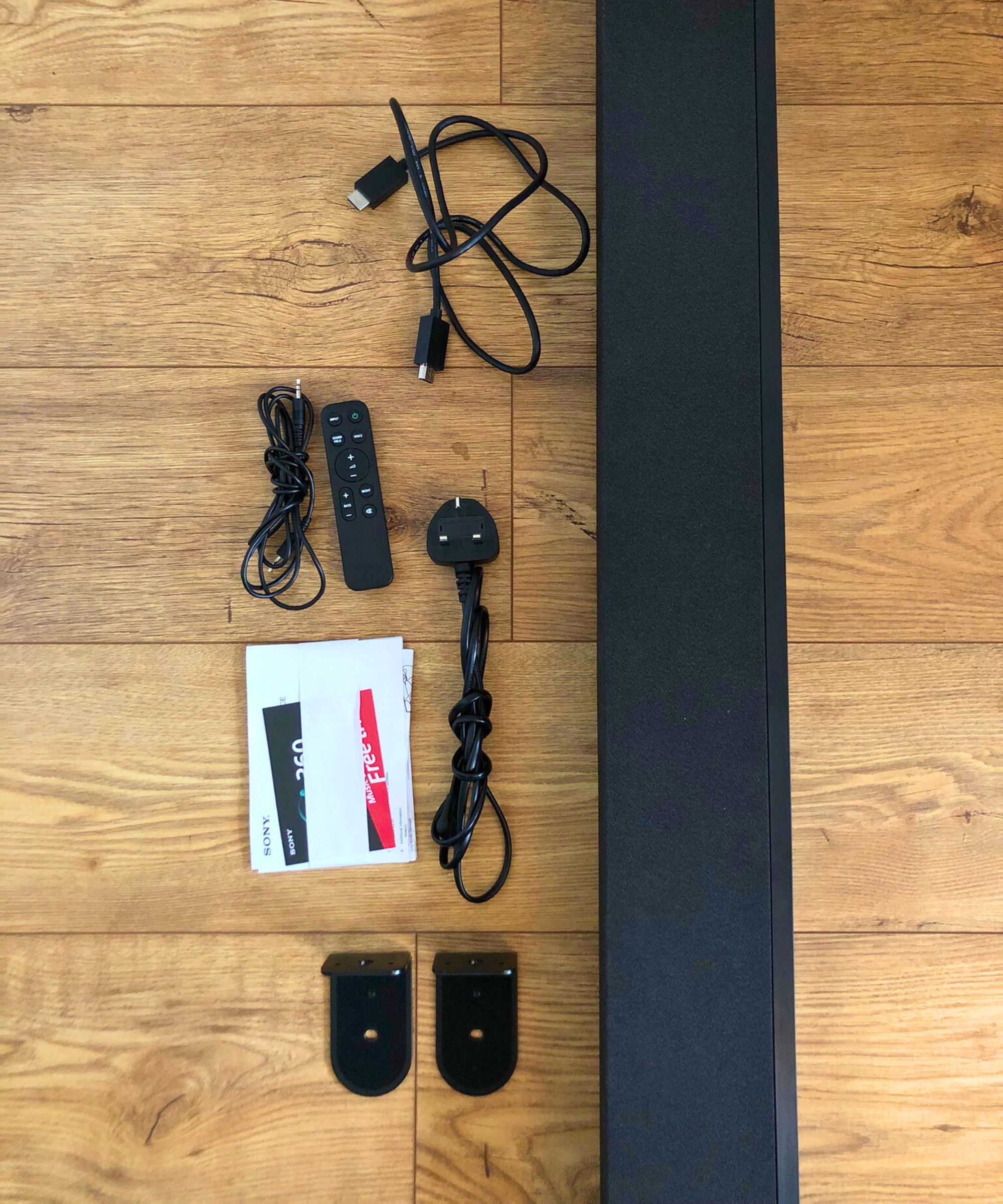
4. Sony BRAVIA Theater Bar 8
The best soundbar for realistic surround sound
Control: Soundbar remote, TV remote, app | Speakers: 11 | Channel configuration: 5.0.2 | Subwoofer?: No, optional extra | Dolby Atmos?: Yes | Bluetooth?: Yes | Supports: Spotify Connect, Apple AirPlay 2
The Sony BRAVIA Theater Bar 8 produced the best surround sound out of any soundbar I've tested. It's true room-filling audio, so much so that it's easy to forget that it's coming from just one device.
Its two up-firing speakers can send soundwaves around your head to achieve 360 Spatial Sound Mapping – or, in real terms, audio that sounds like it's coming from all over the entire room. That's an impressive feat from Sony, especially when paired with the BRAVIA Theater Bar 8's exceptional audio clarity.
Every detail is precisely tuned, and the sound is almost always perfectly balanced. You could be listening to a layered jazz song (so, any jazz song...), or a busy scene in a bustling city center, and the soundbar delivers every small detail with satisfying accuracy.
When watching Arrested Development, I could hear cars driving past and the wind blowing in the background – noises I'd never picked up on before. The BRAVIA Theater Bar 8 is a smart home must-have if you enjoy being pulled into the scene.
Its bass is a little lacking, though. Now, it isn't bad by any means, but considering its $999.99 price point, I wouldn't expect this to be an aspect that would need improvement. Often, people buy soundbars specifically for the bass, to make action scenes feel real and to elevate their music listening experience.
Sony sells a separate subwoofer, the wireless Sony SA-SW5, but it costs $799.99. This would no doubt create one of the most powerful sound systems your home has ever seen (as the bass is the Theater Bar 8's only real drawback), but that's a lot of money.
If you don't want to miss out on bass, I'd consider the Bose Smart Ultra Soundbar, as it costs the same as the Sony. They're similar in many ways – both have exceptional clarity and surround sound – but the Bose's two built-in bass chambers provide more depth and impact.
But if deep bass isn't a priority for you, the Sony BRAVIA Theater Bar 8 delivers realistic scenes and gorgeous-sounding music that will be far beyond what your current TV is capable of.
Read more in my full Sony BRAVIA Theater Bar 8 review.
The Best Mid-Range Soundbar

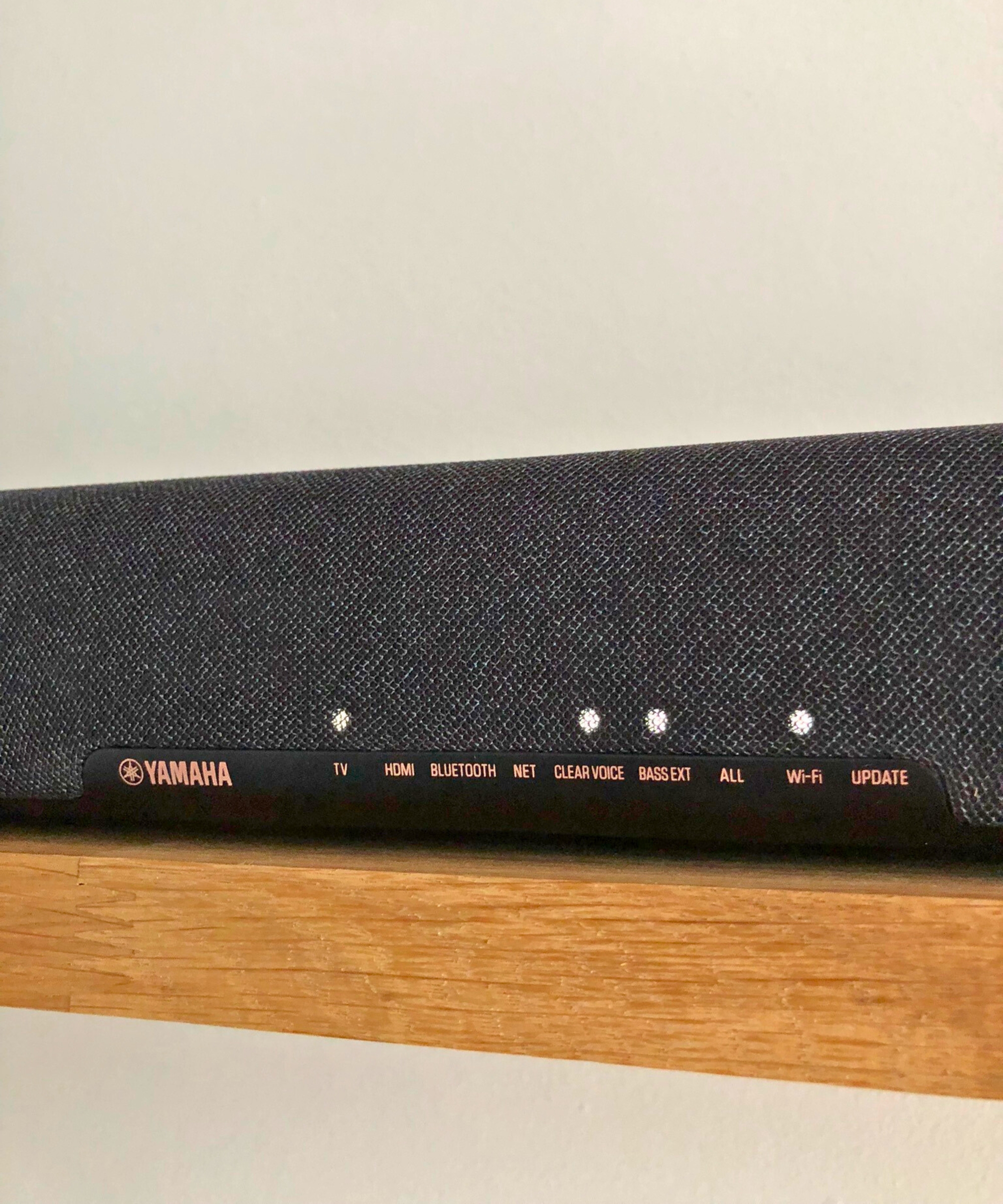
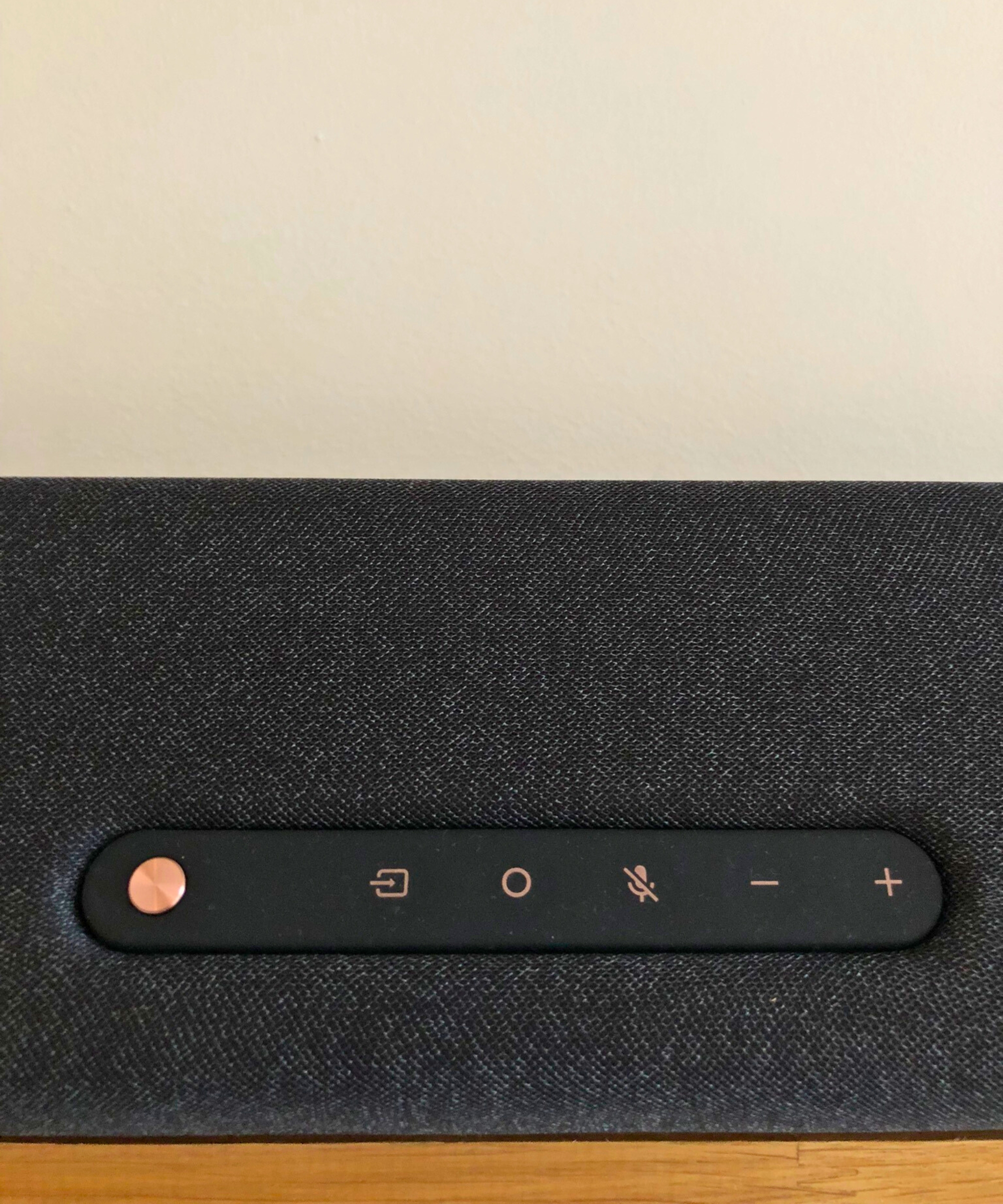
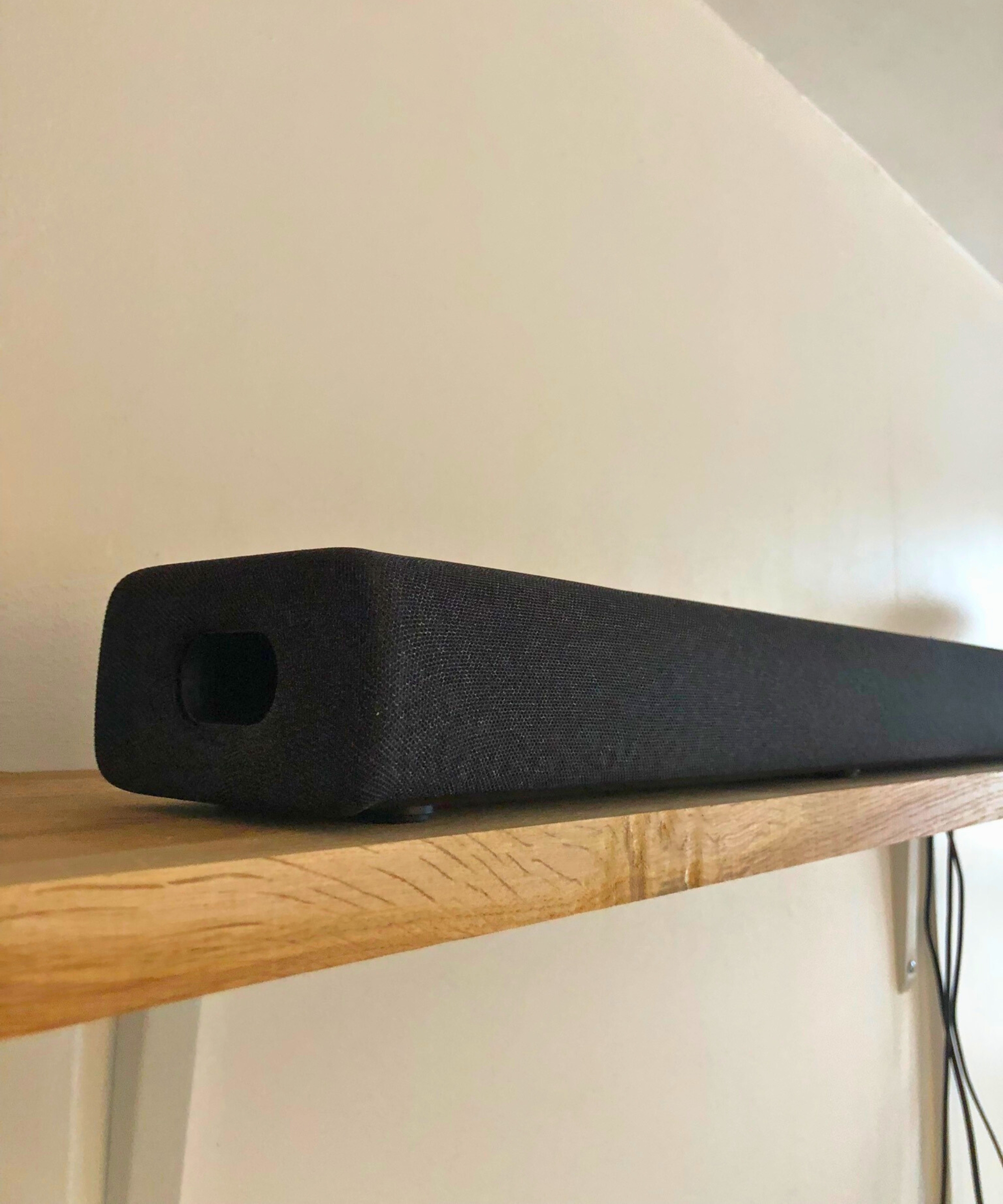
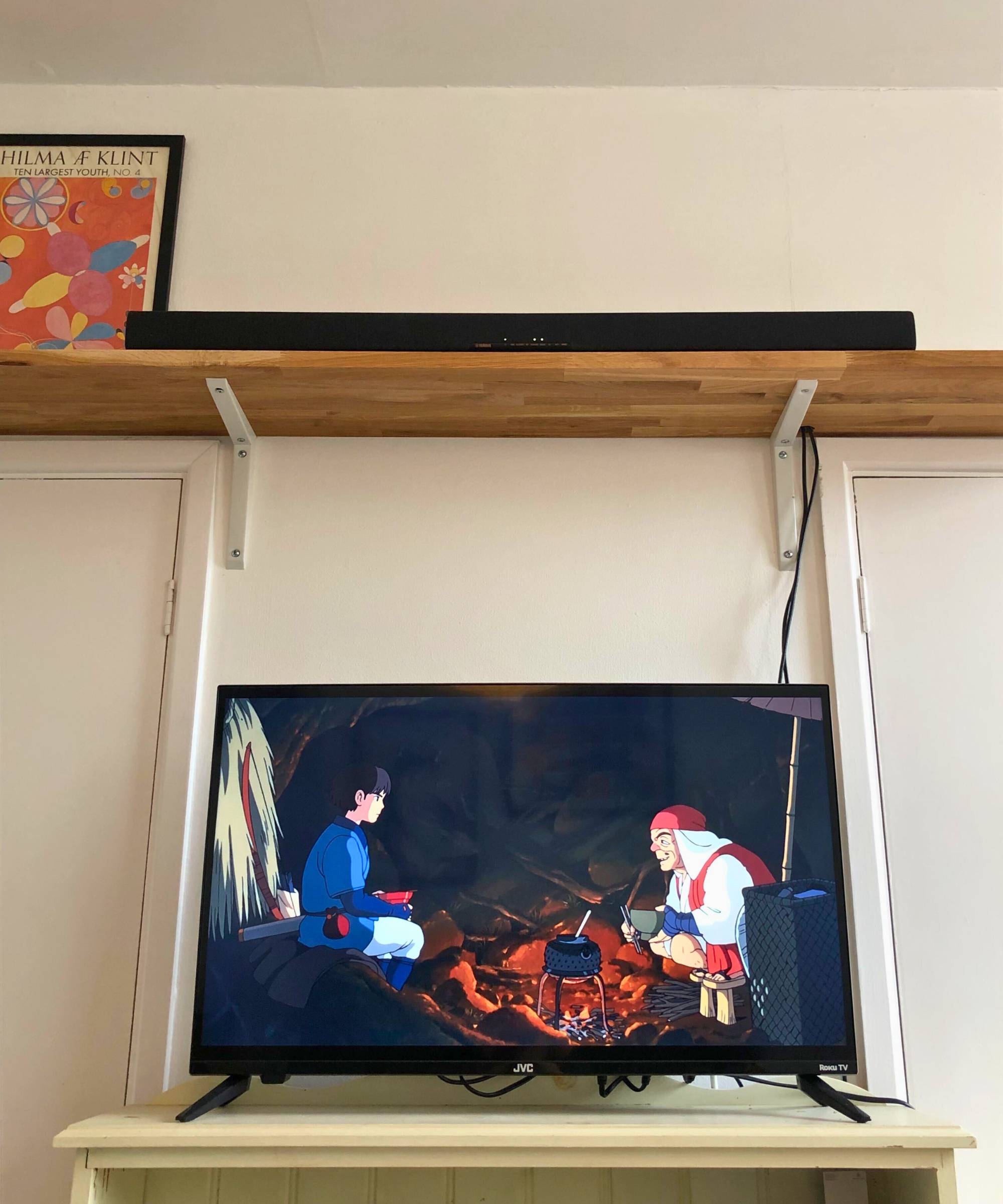
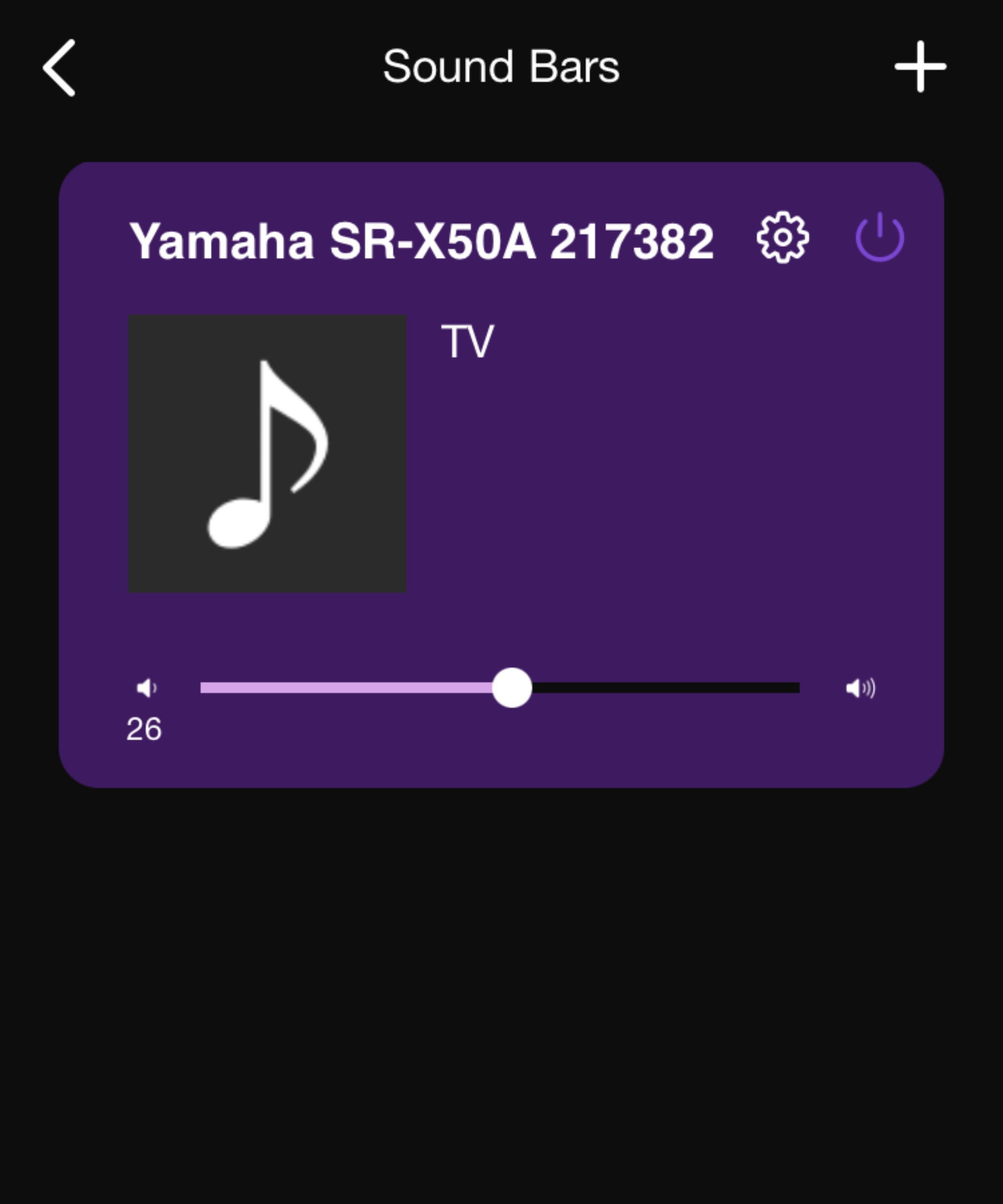
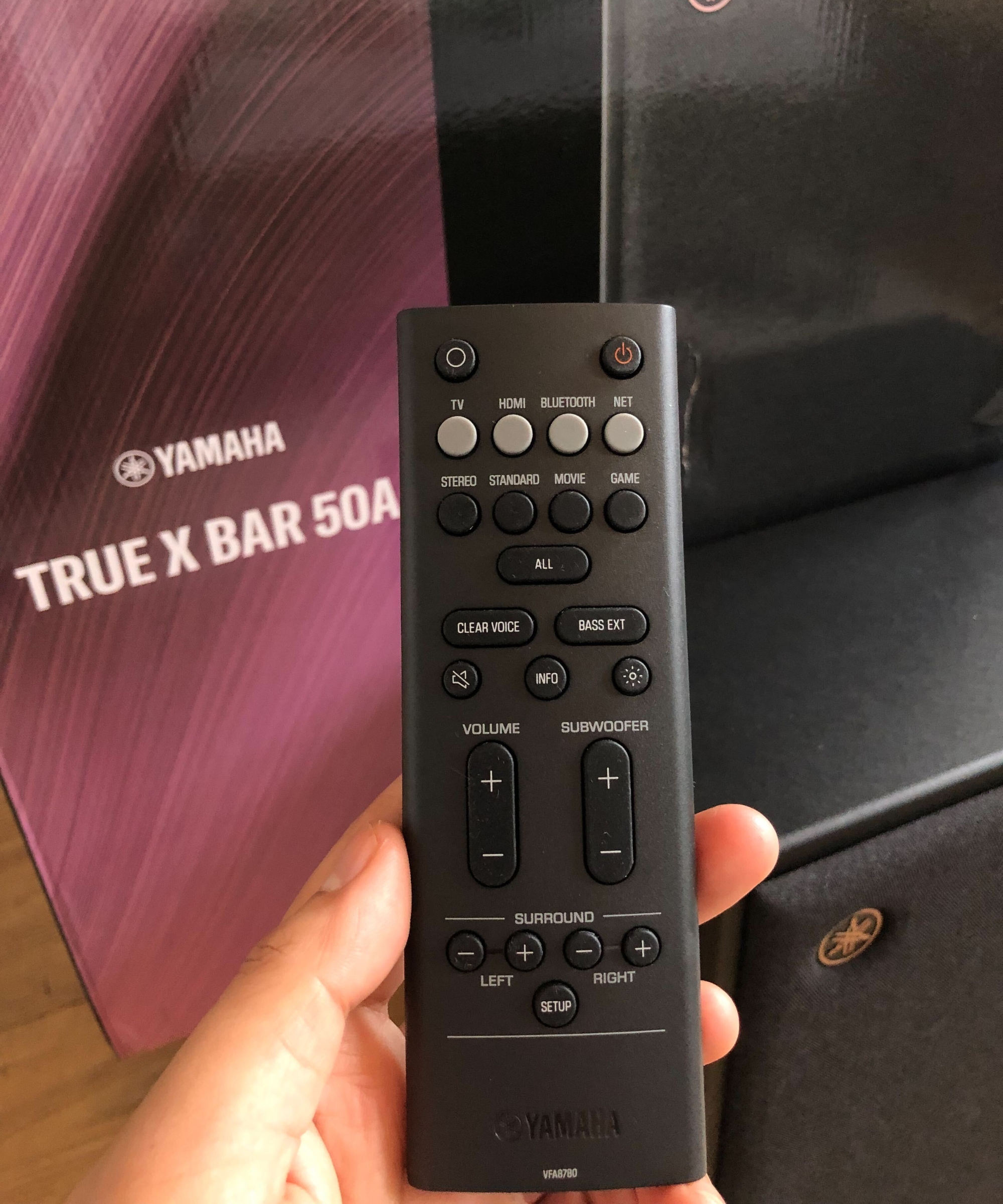
5. Yamaha True X Bar 40A
The best mid-range soundbar, with surprising depth and clarity
Control: Soundbar remote, TV remote, app, soundbar buttons, Alexa voice control | Speakers: 6 | Channel configuration: 2.1.2 | Subwoofer?: Yes, two built-in subwoofers | Dolby Atmos?: Yes | Bluetooth?: Yes | Supports: Apple AirPlay 2, Spotify Connect, Tidal Connect
I was shocked to hear how rich and vibrant the Yamaha True X Bar 40A sounded, considering I tested it at $399.95. That's $100s cheaper than the soundbars above, and I was expecting $100s' worth of difference in sound quality.
But in reality, sure, the Yamaha can sound distorted or tinny at rare moments, but for the most part, it delivers a clear, colorful, and surprisingly deep soundscape that elevated every scene and song I listened to.
I tested the 40A immediately after the Yamaha True X Bar 50A, which uses the same soundbar but adds an external subwoofer. And after I was floored by the 50A's trembling bass and loud volumes, I was anticipating the bass to disappear, but the 40A sounds strong without the added subwoofer.
The two built-in subwoofers add warm depth. Orchestral music adds tension, and fight scenes have tight impacts. But where other soundbars like the Sonos Arc Ultra can make certain sounds – gunshots, for example – sound thick and punchy, with the Yamaha, they're essentially an amplified version of what you'd hear from your TV.
Sounds are well-balanced, with background noises never distracting from the scene, and voices sound authentic. The only time scenes sounded inauthentic was when a lot was going on, and the sounds became muddied.
Unsurprisingly, from the same brand that creates industry-leading keyboards, guitars and amps, the Yamaha True X Bar 40A produces deep, room-filling sound when playing music. Again, the bass surprised me here, and deep songs such as Massive Attack's Angel had the low-end frequencies pounding through the floor.
Setup was instant – simply plug it in and hear the audio – but the smartphone app isn't the most user-friendly, requiring you to click through multiple screens to change the settings.
I'd recommend going for the Yamaha True X Bar 50A if you want a fuller sound. But while the 50A has great depth, the 40A excels in gentle clarity.
Read more in my full Yamaha True X Bar 40A review.
The Best Budget Soundbar

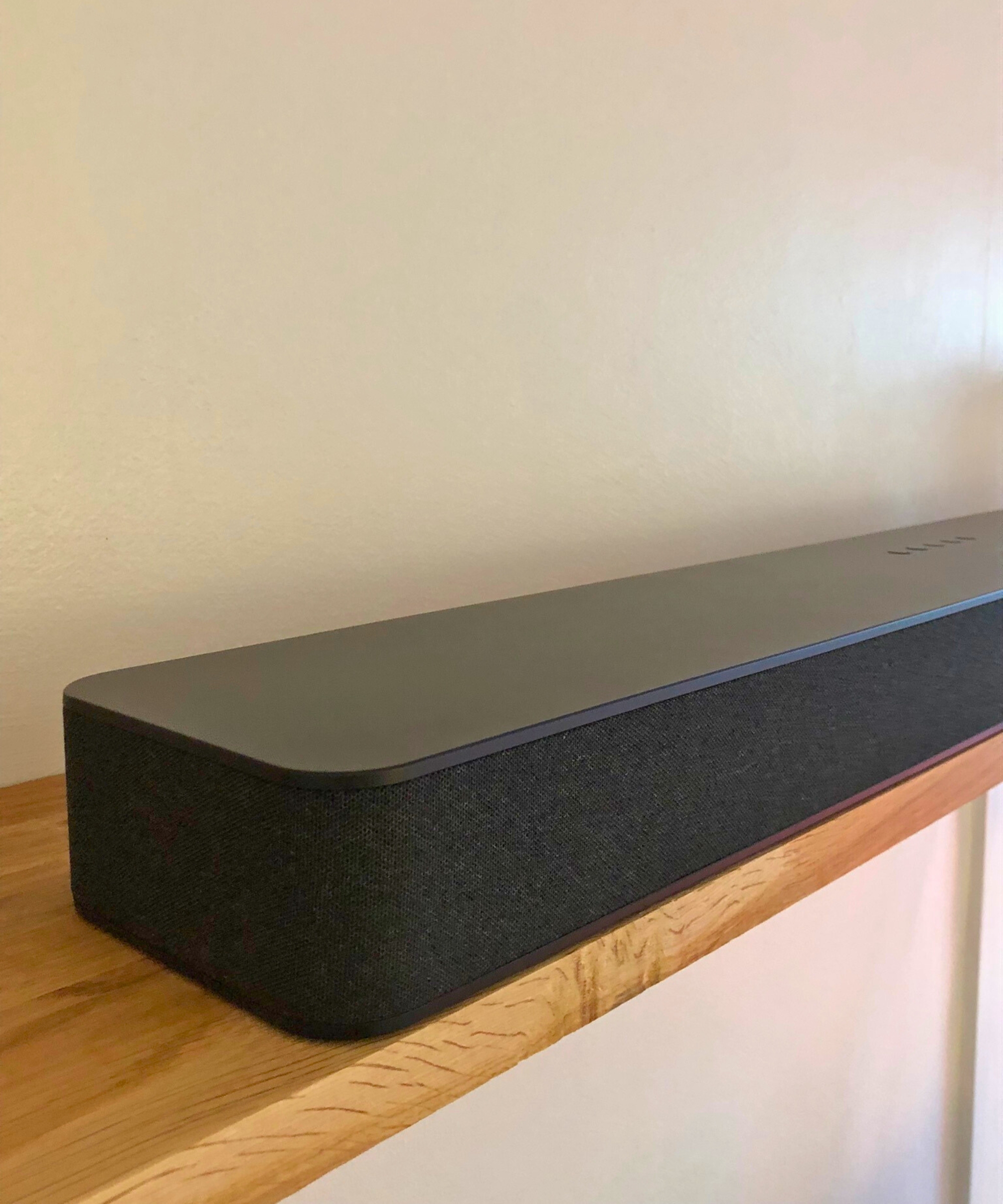
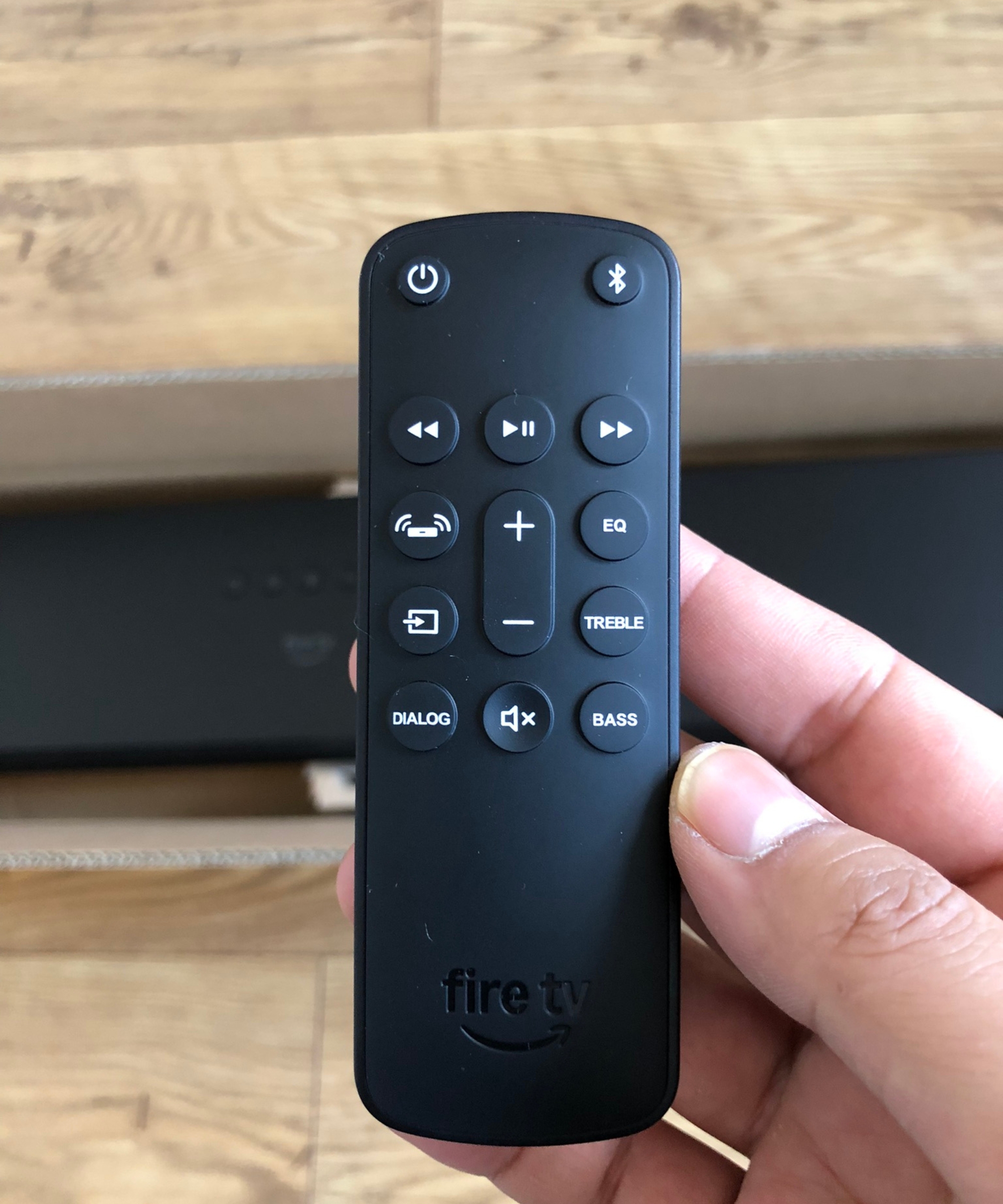
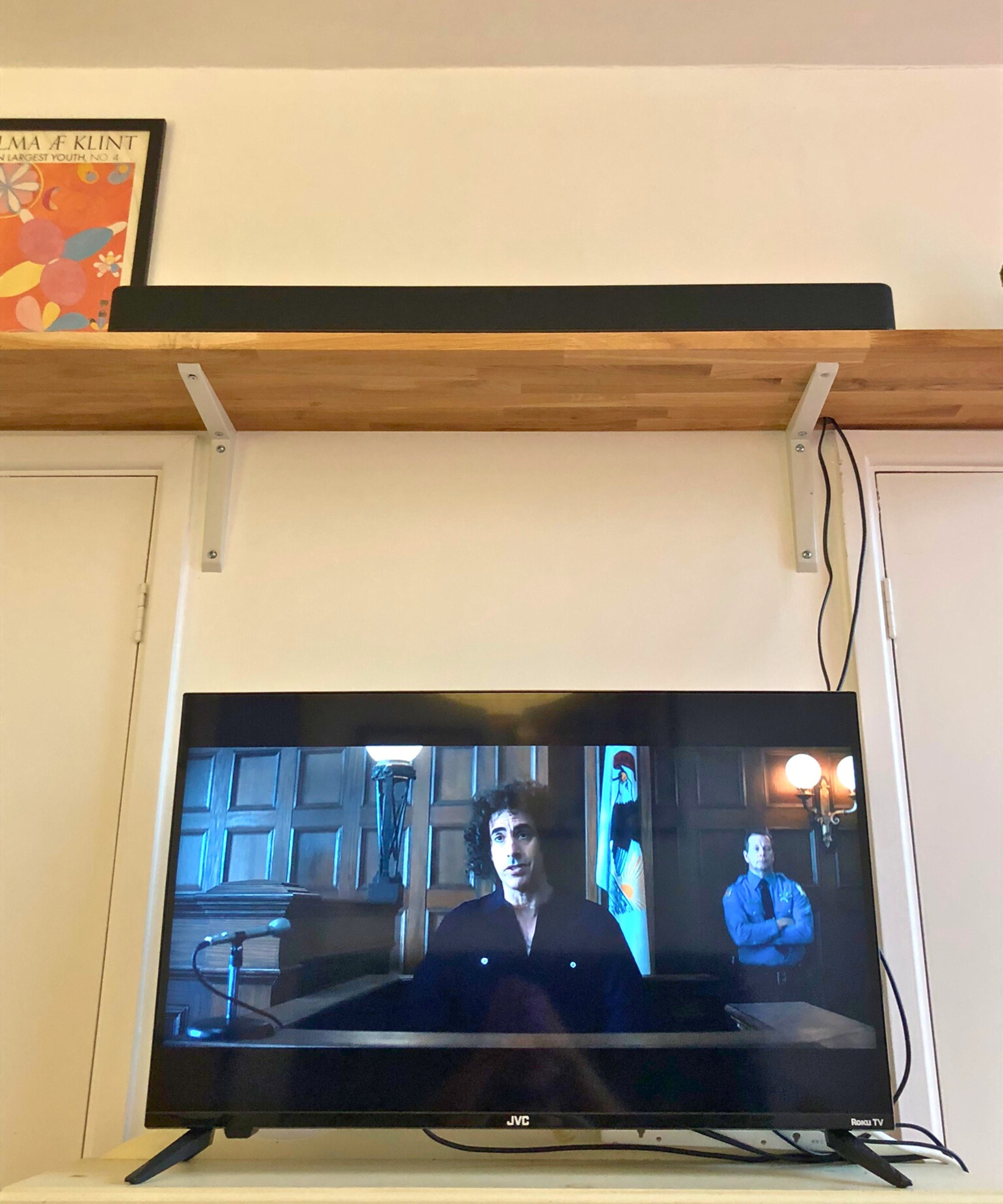
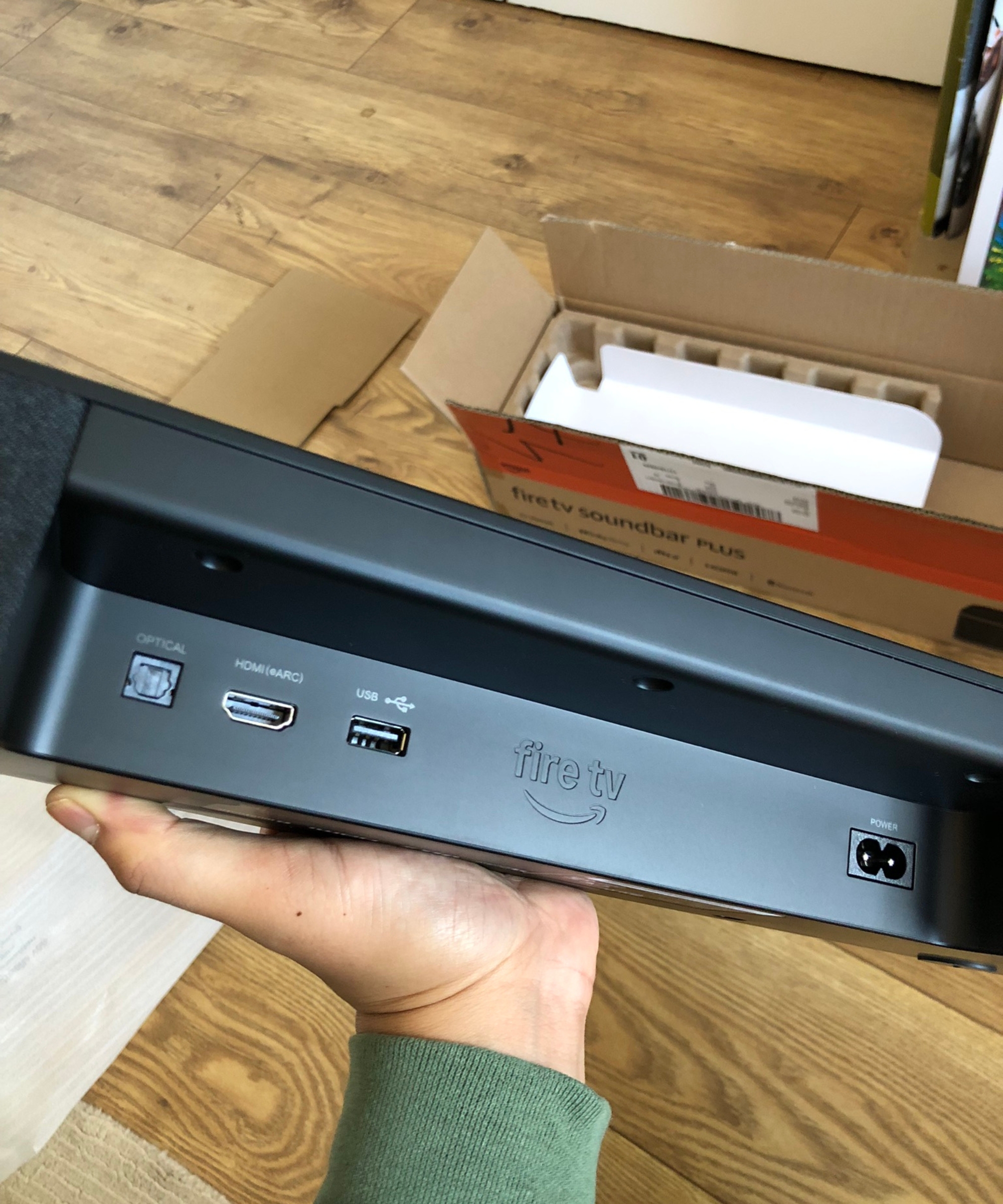
6. Fire TV Soundbar Plus
The best budget soundbar, with great bass and surround sound
Control: Soundbar remote, TV remote, soundbar buttons | Speakers: 8 | Channel configuration: 3.1 | Subwoofer?: Yes, two built-in subwoofers | Dolby Atmos?: Yes | Bluetooth?: Yes | Supports: None
If you're hoping to achieve Sonos and Bose-level of sound quality without spending the big money, that's sadly not quite possible, but there are still soundbars under $300 that will make a big upgrade to your TV setup.
The Fire TV Soundbar Plus is the best budget soundbar we've tested. It doesn't have the finely tuned sound engineering that you'll find in the more premium soundbars, which result in clearer details and greater depth.
Instead, its eight speakers amplify the existing sound, making everything sound fuller and more impactful. And it has two built-in subwoofers for powered bass – something you don't find in many budget soundbars (like the Sonos Beam, which costs around $250 more).
It also supports Dolby Atmos titles and has limited surround sound capabilities, meaning you can subtly hear which direction sounds are coming from and be enveloped in busy scenes.
Voices come through clearly, and if you turn it loud enough, you can hear them resonate through the room, something I heard most when watching The Trial of the Chicago 7, where the voices boomed throughout the courtroom, each character distinctly coming from where they're positioned on screen.
It takes fewer than two minutes to set up the Fire TV Soundbar Plus. It doesn't connect to an app, so once you've connected the power and HDMI cables, everything's ready to use.
Surprisingly, at this low price, it still has bass, treble, and dialogue adjustments, and you can choose between four EQ presets: Movie, Music, Sports, and Night.
And if you want to level up the sound stage, you can get the Fire TV Plus Soundbar with a standalone subwoofer for an extra $130, or the Fire TV Soundbar Plus with a subwoofer and two surround speakers for $489.99, which will create multi-directional sound with richer detail and deeper bass.
Read more in my full Fire TV Soundbar Plus review.
How to Choose a Soundbar

Before getting into the technical spec, knowing how to choose a soundbar begins by understanding what you're using it for and the type of space you live in. For many, the aim is to create a more immersive and cinematic feel when watching films, while others prefer clearer dialogue or a neater way to boost TV audio without a tangle of speakers and wires.
Start by considering how you’ll use it most often, whether that’s movie nights, enhancing the atmosphere of music at home, or upgrading the sound of everyday TV.
Size and placement matter, too. A slim, compact soundbar is ideal if you want something discreet that sits neatly beneath your TV, while larger models can offer a fuller, room-filling sound.
If your living space is open-plan, or you love hosting, a more powerful option may suit you better, while smaller rooms often benefit from a simpler bar that won’t overpower the space. Many designs are styled to complement modern interiors, so think about how the finish and shape will sit within your home as much as how it sounds.
Finally, look at the extra features that can make life easier (more on this below). Built-in voice assistants, Bluetooth or Wi-Fi streaming, and the option to add a wireless subwoofer or rear speakers can all help tailor the soundbar to your lifestyle.
For some, simplicity is key, and a plug-and-play model that works straight out of the box is the best choice. For others, flexibility and connectivity with other smart home devices will prove more useful.
To find out what a soundbar is capable of, read trusted reviews.
Key Specs, Explained

Channel configuration (e.g., 2.0 or 5.1.2): These numbers show how many channels (built-in speakers) a soundbar has. The first number represents horizontal speakers (left, center, right), the second number represents subwoofers, and the third number represents height channels, like up-firing speakers for surround sound and Dolby Atmos.
In real terms, a 2.0 setup is a simple left and right stereo bar, a 2.1 adds one subwoofer for bass, while 5.1.2 introduces two up-firing speakers for surround sound and overhead effects. Often, the more channels there are, the more opportunities to tailor the sound.
Dolby Atmos and DTS:X: These formats are designed to create a more three-dimensional soundscape, with effects that move around and above you. If you want that home theater experience, choosing a soundbar that supports Dolby Atmos and DTS:X can make a noticeable difference. Cheaper models may use DTS Virtual:X which digitally recreates the experience of surround sound, while Dolby Atmos and DTS:X have the capacity within the hardware itself.
Note: You'll need to play TV and movies using platforms that support Dolby Atmos, whether it's a Blu-Ray or a premium streaming service.
Connectivity: HDMI ARC or eARC connections are the simplest way to hook your soundbar up to your TV and control it with a single remote, but not every TV has this port. If yours doesn't, you'll likely need an optical adapter (not all soundbars include this cable, but they're inexpensive). Bluetooth and Wi-Fi streaming let you play music directly from your phone.
Subwoofers and surround/rear speakers: Some soundbars come with separate, wireless subwoofers to deepen bass, or optional rear speakers to add surround sound. These can be worth considering if you have space, but smaller living rooms often sound better with just the bar itself.
If you don't want a full sound system, many soundbars have subwoofers built into the soundbar, and more expensive models will have up-firing speakers that send soundwaves around the room and above your head to recreate the feeling of surround sound that two rear speakers would provide.
Sound modes: Many soundbars include modes tailored to different types of content, such as ‘movie’, ‘music’ or ‘voice’. These can make dialogue clearer, give more impact to action scenes, or create a warmer balance for music. A ‘night mode’ or 'quiet mode' is useful if you often watch TV late at night and have neighbors or roommates who might be disturbed.
Smart features: Certain soundbars double up as smart speakers with built-in assistants like Alexa or Google Assistant. This can be handy if you already use voice control around your home, or want to stream music without turning the TV on.
And if you have other wireless speakers at home, some soundbars can become part of an ecosystem (Sonos and Bose are the main players here). This allows you to expand your system over time and play music in sync throughout your home, using your voice to turn them on as you enter different rooms.
How we test soundbars
I test soundbars with a set playlist in the largest room of my home, with a mix of soft furnishings and hard walls and floors that accurately represent the acoustics of a realistic living room. I test using a set list of scenes from movies and TV shows, and a playlist of songs that demonstrate the different frequencies that a soundbar can handle. Using the same list with each soundbar standardizes testing, meaning that each model is reviewed under the same criteria. You can find the full list below.
I test the full feature set of each soundbar. If it's compatible with Dolby Atmos, FLAC (lossless music files), IMAX Enhanced, or any other specific format, I test using those file types. I adjust every audio setting available – such as bass, treble, voice enhancement, night mode, or sound height – to find out the full capabilities on offer for each soundbar.
I also assess how easy each soundbar is to set up. Not everybody is tech-savvy, so a quick and painless setup scores major points. A more fiddly setup may be acceptable for those more familiar with tech, and often results in a more comprehensive and customizable sound system, but can be off-putting for others.
I started testing soundbars for Homes & Gardens in 2025, but I've been an audiophile for my entire adult life. My speaker collection includes bookshelf, portable, outdoor, and amp setups. I DJ in my free time, and I run music shows in my local city where I help set up the equipment. I understand audio tech and all of its nuances, and how it can improve our lives at home.
So, when it comes to soundbars, I combine my knowledge of (and lifelong devotion to) high-quality sound with my years of home tech journalism and reviewing. I've been testing tech and home products for more than four years now, racking up thousands of hours in the process, and I understand the needs and wants of readers looking to upgrade their spaces.
I've researched hundreds of reviews, articles, and videos on the latest tech to choose the right soundbars to test. This is a growing area, so watch this space as we develop a suite of content so that any household, regardless of size and budget, can find the best soundbar.
What We Test
To standardize testing across every soundbar, I use a set list of scenes and songs:
- Harry Potter and the Deathly Hallows: Part 2. Fast-paced, loud, and busy action scenes, with dialogue, explosions, artificial sound effects (casting spells and mystical creatures), emotional scenes, and a dramatic score.
- Avengers: Infinity War. Transitions from distant loud noises to on-the-ground action, with dialogue, crowds, artificial sci-fi sounds, and fight scenes. Ideal for testing spatial audio and hearing fine details during loud moments.
- John Wick: Chapter 2. Fast-paced action, tense music, tight fight sounds, and background noise (trains, crowds, traffic).
- Breaking Bad (season five, episode nine). Intimate dialogue between two characters, switching between whispering to impassioned shouting.
- Arrested Development (season one, episode one). Fast-paced dialogue in a casual setting, voices with different pitches, and background noises.
- Princess Mononoke. Emotional sequences with rich musical scores and Foley (creating sounds for animation).
- Our Planet II. Ideal for testing audio range, with wide-ranging nature sounds, music (from dramatic to subtle), and narration.
And to test music quality, I listen to songs from different genres and times that highlight different frequencies, instruments, voices, and sounds. This list is roughly ordered from low to high (bass to treble). You can listen to the playlist here on Spotify.
- Angel by Massive Attack. Trip-hop, electronic, slow build-up, percussion.
- Phoenix by Daft Punk. Electronic, dance, thumping bass, soft highs, cymbals, sampling, synths.
- Oh My God by A Tribe Called Quest. Hip-hop, overlapping voices, tight bass, vocal sampling, subtle crackling, jazz influence.
- Didn't Cha Know by Erykah Badu. Neo-soul, layered instruments, varied percussion, synths, smooth trebles, and strong midrange.
- Feel No Pain by Sade. Smooth soul, electronic, full audio range including low bass, strong midrange, soft highs.
- Three Drums by Four Tet. Electronic, dance, layered live instruments, soft drums.
- Simulation Swarm by Big Thief. Soft folk, melodic, full band, pure midrange, vocal trebles.
- Suzanne by Leonard Cohen. Old, low-fidelity, high-emotion, guitar, strong midrange.
- Ramble On by Led Zeppelin. Hard rock (with quiet moments), full band, slow-to-fast pace.
- Inner City Blues (Make Me Wanna Holler) by Marvin Gaye. Jazzy soul, trebles overlapping the midrange, with occasional low frequencies.
- The Sea by Morcheeba. Emphasized midrange alongside vocal highs and percussive lows.
- Robber by The Weather Station. Soft pop, subtle sounds, high trebles, brass, strings, isolated drums.
- An Ever-Changing View by Matthew Halsall. Jazz, chimes, brass, varied percussion.
- What If Nile Rodgers And Fela Kuti Were Friends by All Day Breakfast Cafe. Funk, breakdown, high energy, slow moments, smooth vocals.
- Pitch the Baby by Cocteau Twins. Dream pop, pure treble, synths, electronically altered voices.
- Set Fire to the Rain by Adele. Pop, booming voice, high emotion.
- Location by Playboi Carti. Hip-hop, high highs, electronic layering, trap rhythms.
FAQs
What is the best soundbar brand?
Sonos, Samsung and Bose are the popular choices for soundbars. These premium tech brands have been engineering high-quality audio equipment for years, and after testing models from Sonos and Samsung, I can confirm that their offerings are absolutely incredible, producing some of the highest-quality sound I've heard in a home setup.
Do soundbars need a subwoofer?
Technically, no, but a subwoofer brings a major improvement in sound. A subwoofer is the speaker that's dedicated to bass and low-end frequencies, so if you like booming action scenes, deep voices, and bass-heavy music (electronic, hip-hop, funk), I'd consider it essential. You can notice a drastic difference between soundbars that have a subwoofer and those that don't.
For more home upgrades, read our tried-and-tested guides to the best vacuums, best robot vacuums, and the best non-toxic air fryers.
Design expertise in your inbox – from inspiring decorating ideas and beautiful celebrity homes to practical gardening advice and shopping round-ups.

Dan is the Home Tech Editor for Homes & Gardens, covering all things cleaning, sound, smart home, and air treatment across the Solved section.
Having worked for Future PLC since July 2023, Dan was previously the Features Editor for Top Ten Reviews and looked after the wide variety of home and outdoor content across the site, but their writing about homes, gardens, tech and products started back in 2021 on brands like BBC Science Focus, YourHomeStyle and Gardens Illustrated.
They have spent more than 400 hours testing and reviewing vacuums, soundbars and air purifiers for Homes & Gardens.
Dan has a BA in Philosophy and an MA in Magazine Journalism. Outside of work, you'll find them at gigs and art galleries, cycling somewhere scenic, or cooking up something good in the kitchen.